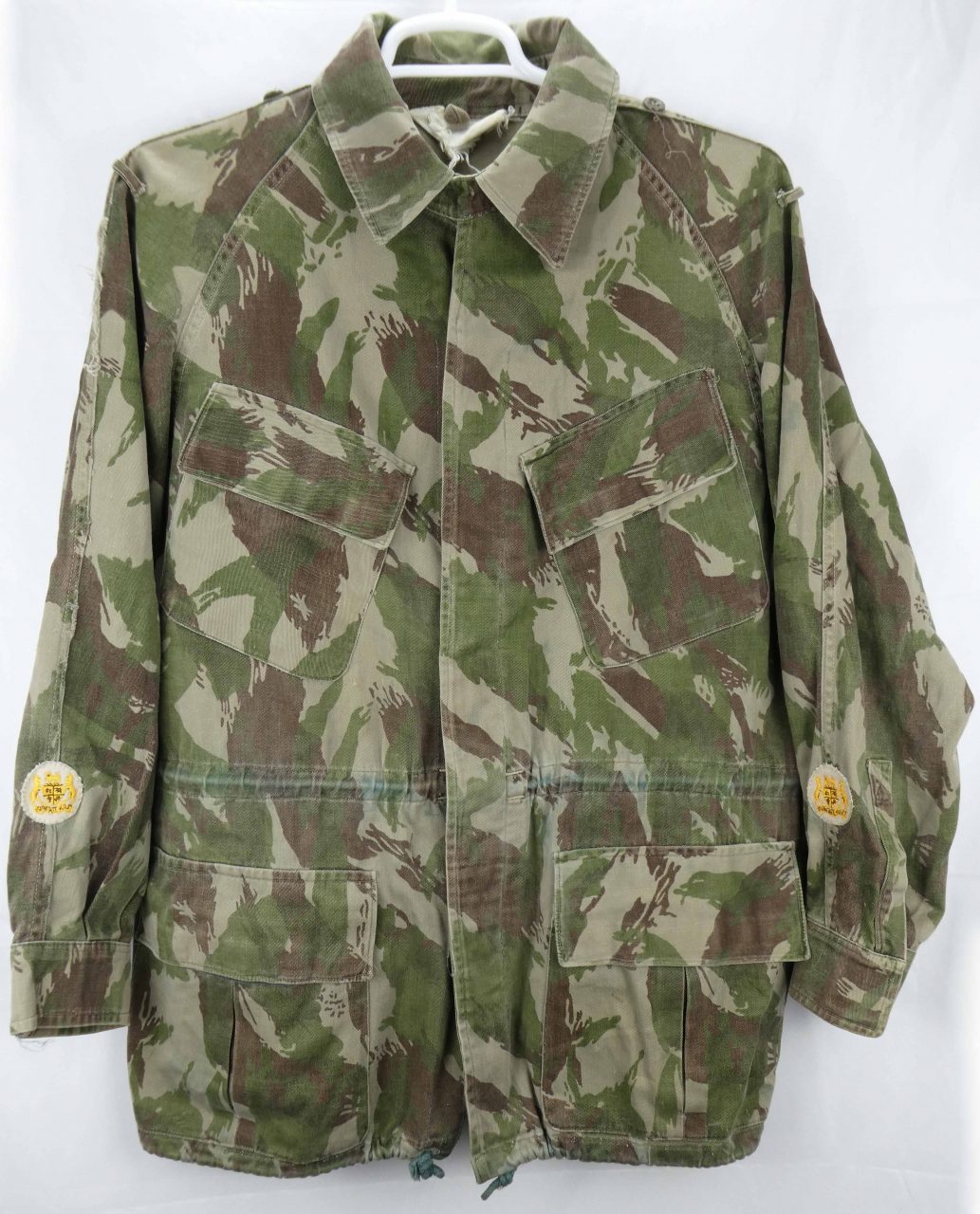The British South Africa Police (BSAP) used this camouflage pattern early in the Rhodesian Bush War. The camouflage pattern was phased out in favor of the “standard” Rhodesian camouflage pattern by the early-mid 1970’s. After independence in 1980, Zimbabwe re-adopted this camouflage pattern and used their version until approximately 1995 [1].
Brown Pattern:
The jacket and pants shown in this section appear to be the “brown pattern”, and can be seen being worn in a photo on Page 75 of the book The Black Boots: The History of the B.S.A. Police Support Unit with the caption “Wounded Constable being transported to Makuti”.
Jacket:
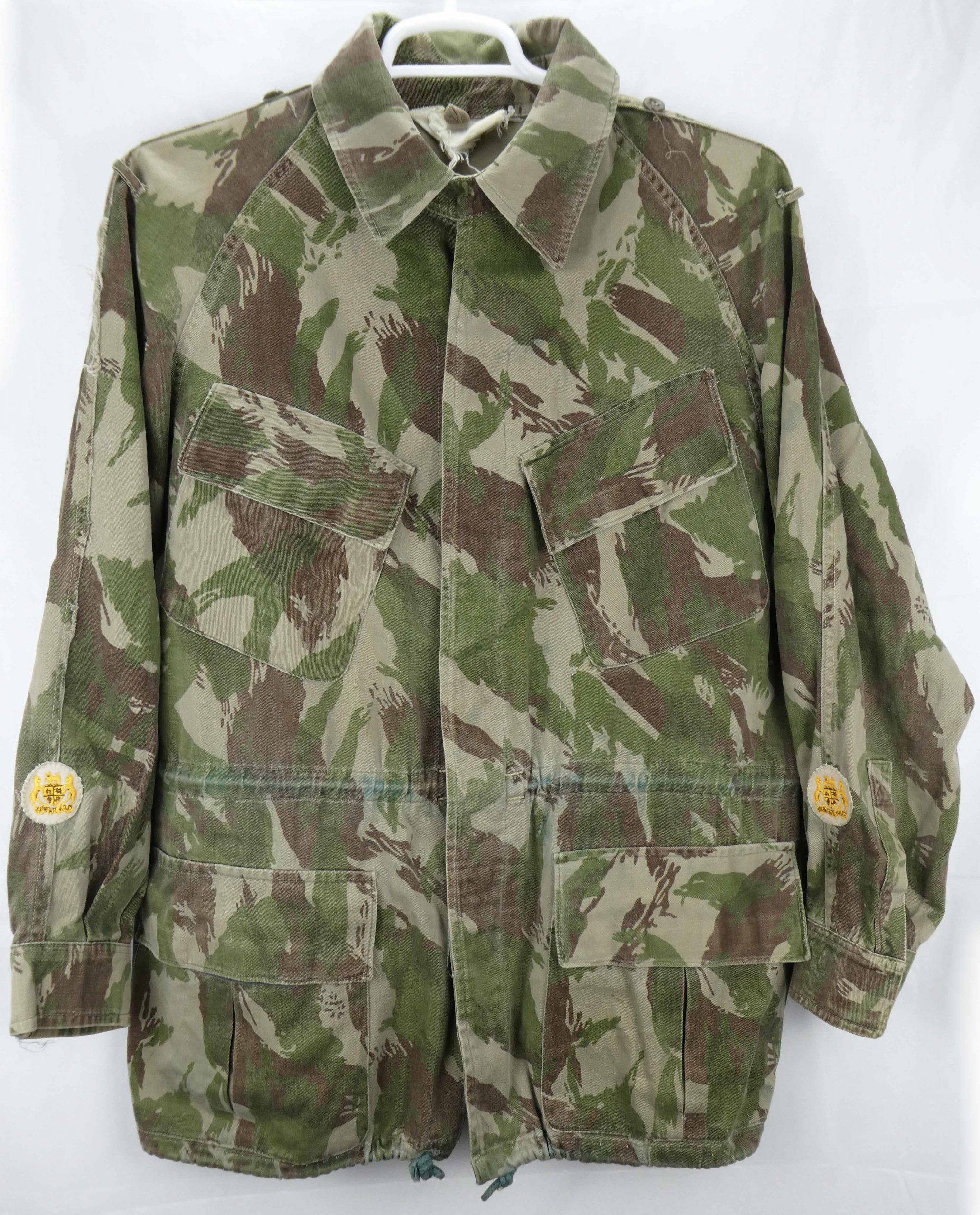
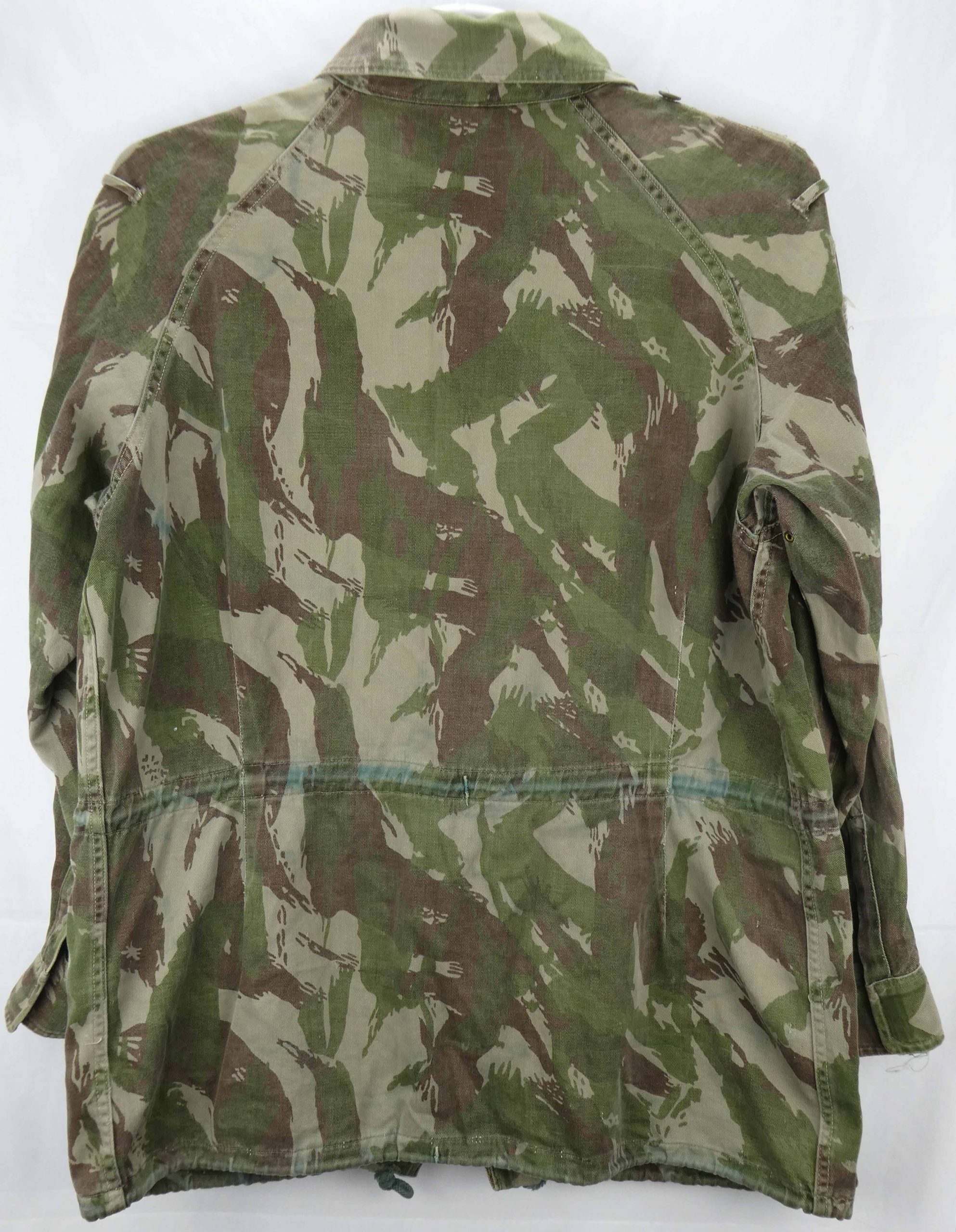
Cut is very similar to the South Africa Police (SAP) 1st Pattern jackets made in Rhodesia (sample 2).
Tag:
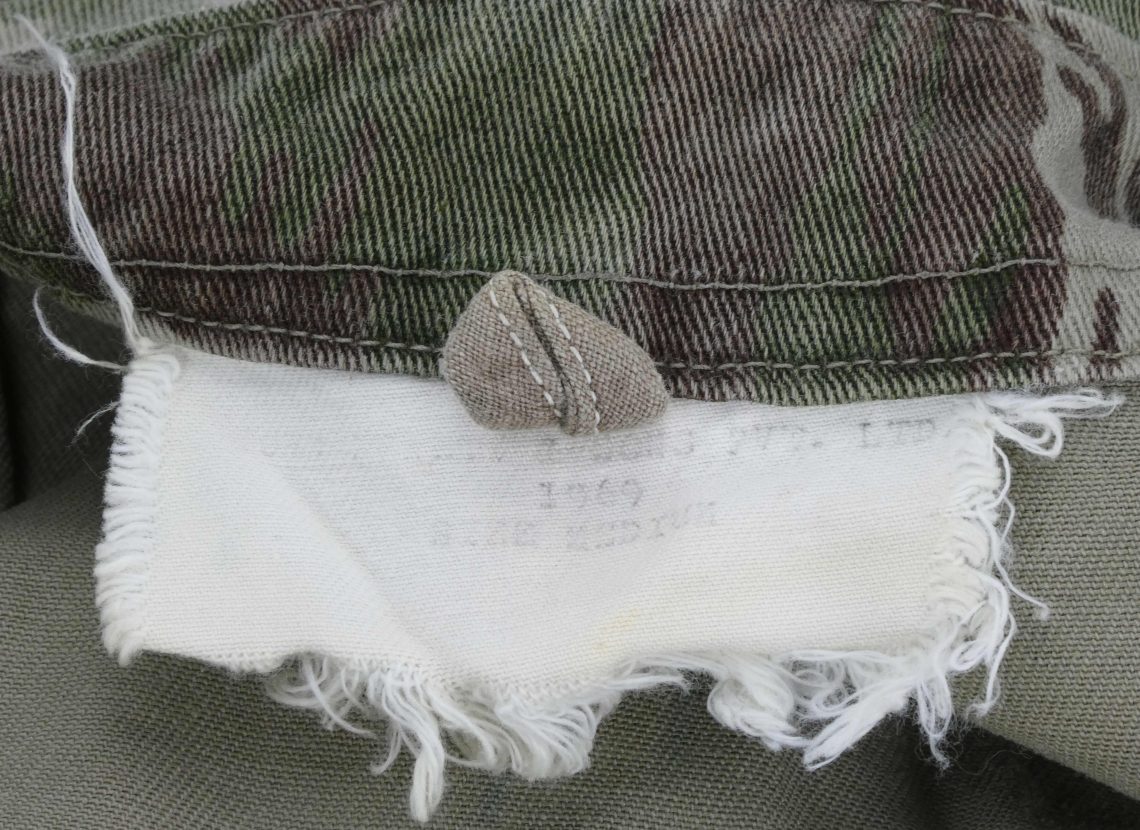
Same manufacturer (John Rowett & Sons PVT. LTD.) as Rhodesian-made 1st Pattern SAP jackets.
Collar:
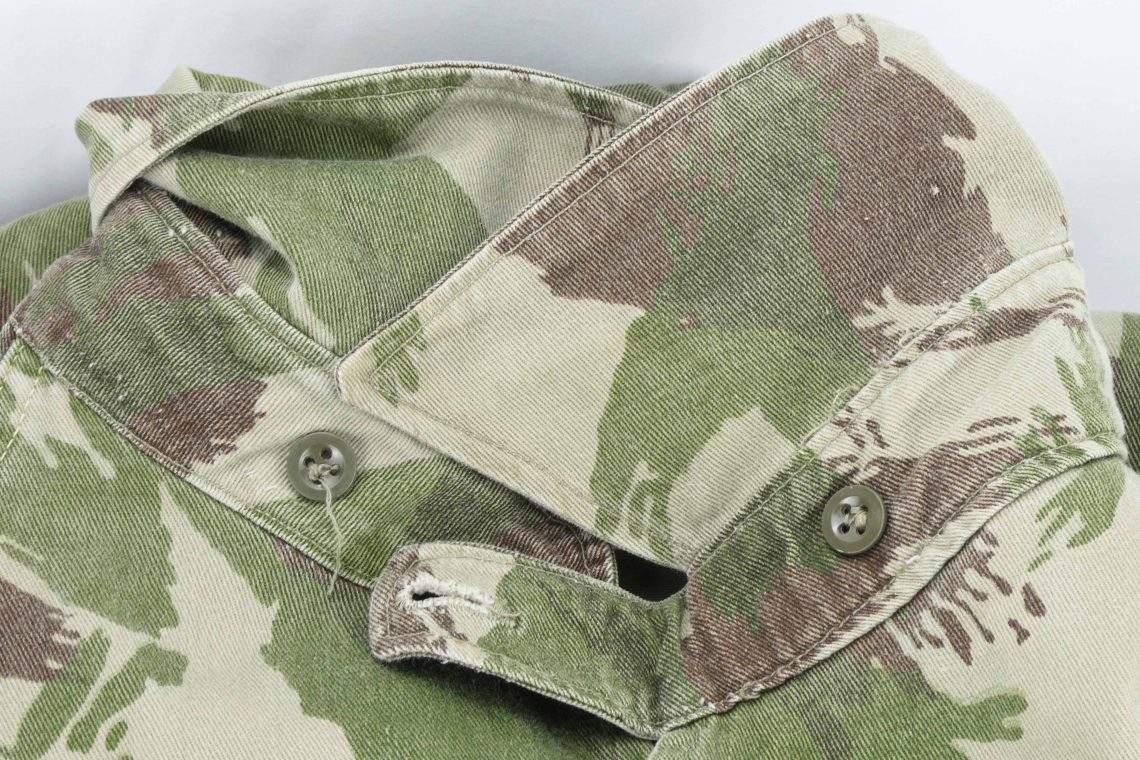
Pockets:
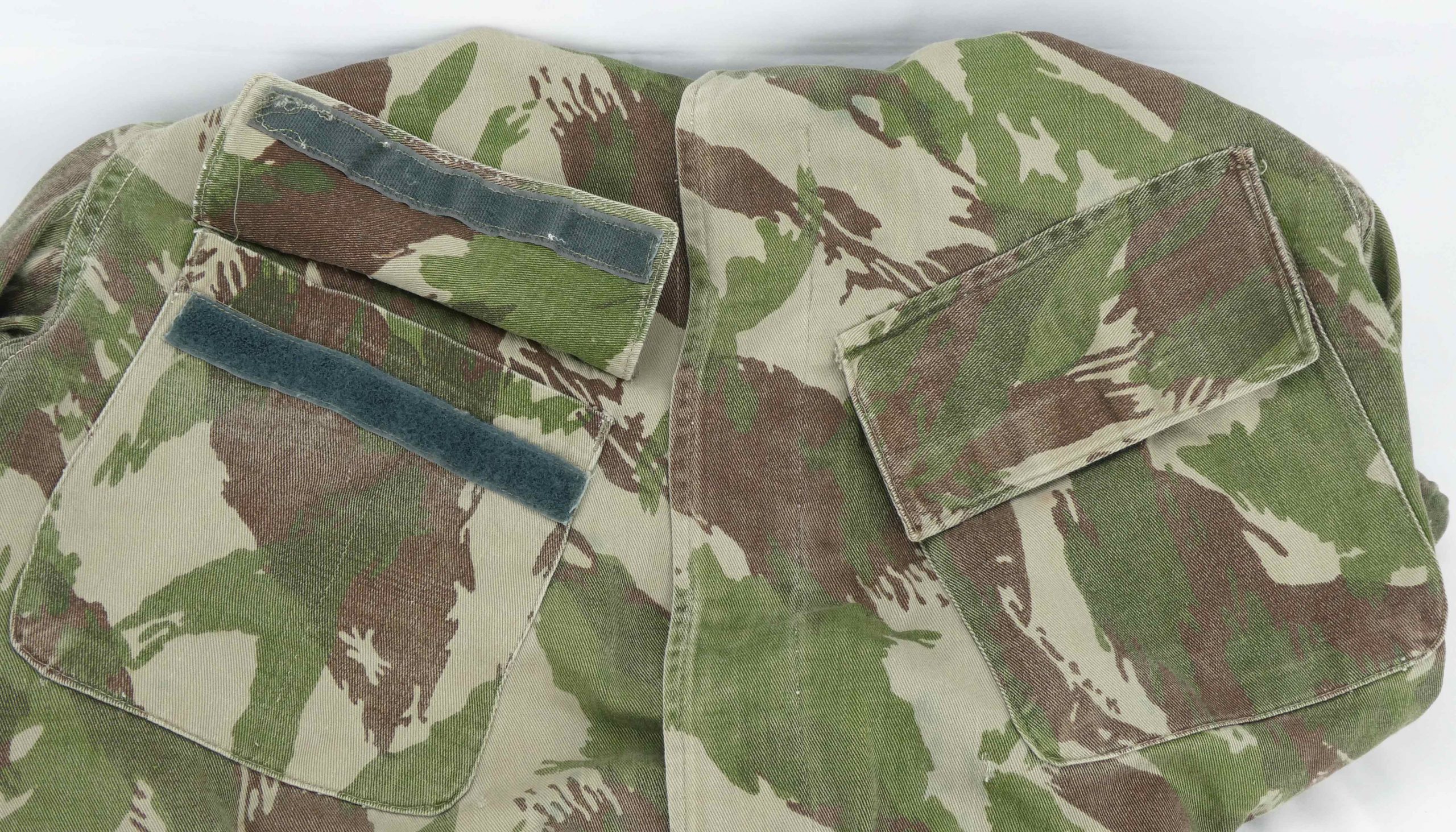

All pockets are fastened with blue-grey velcro.
Cuffs:
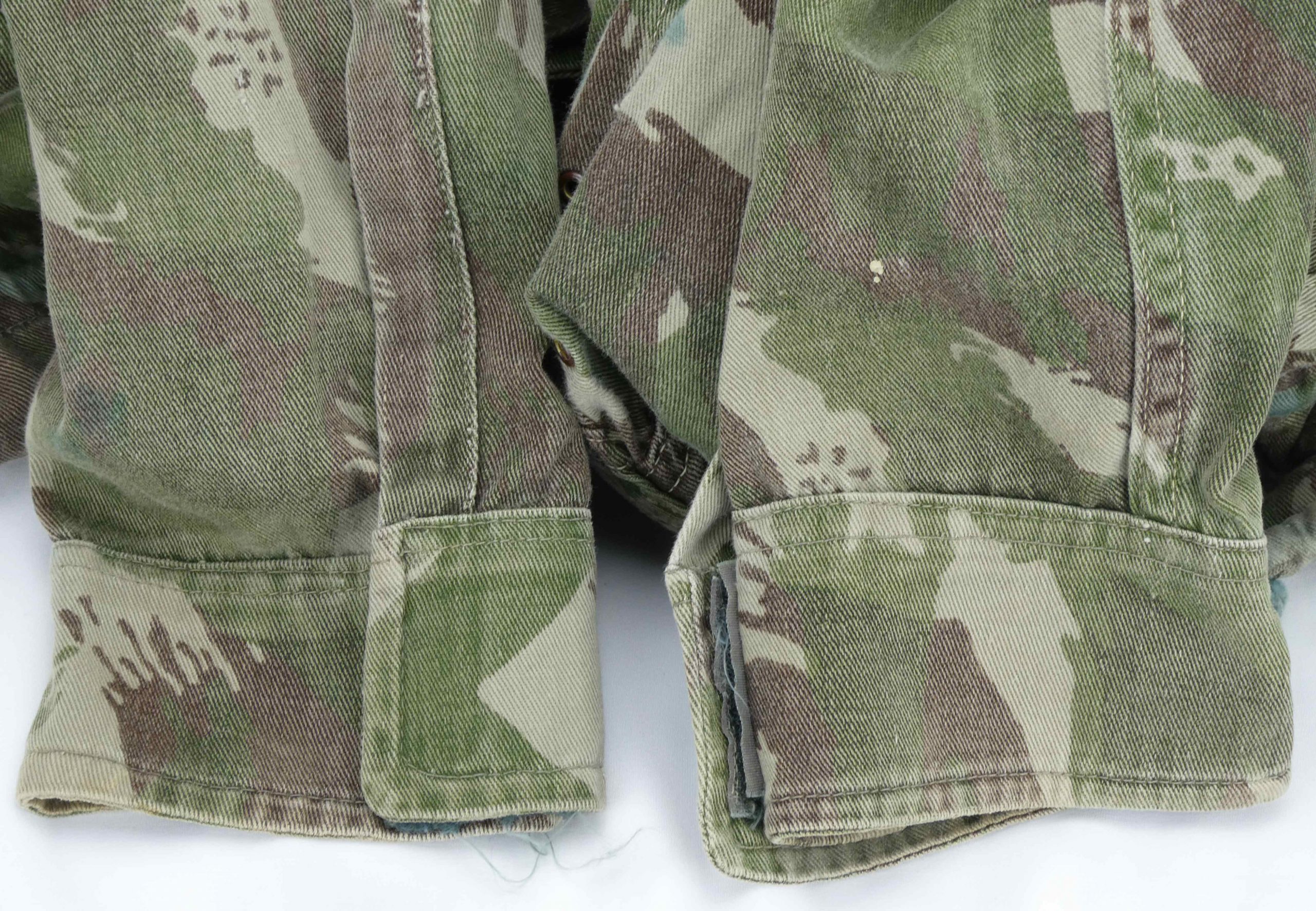
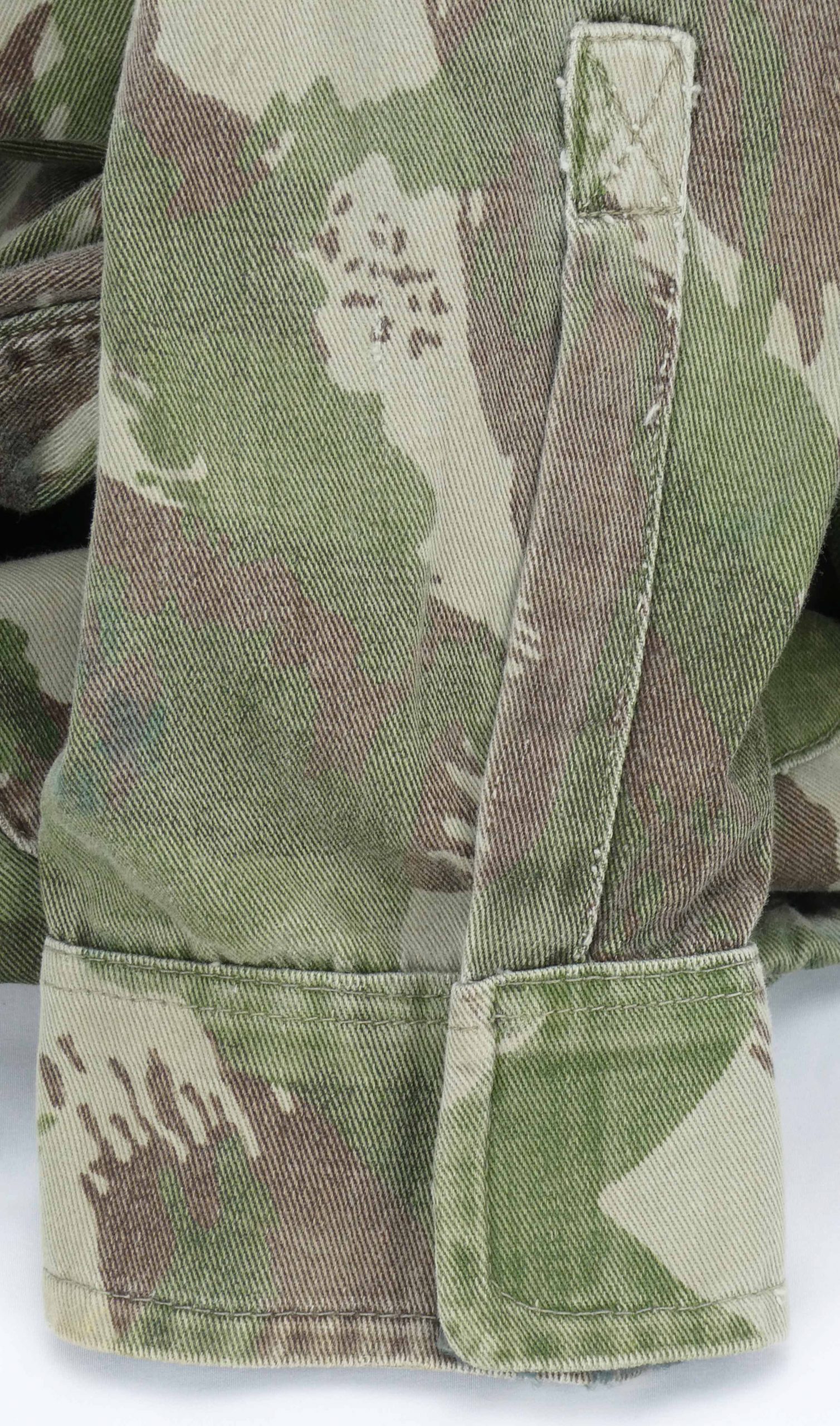
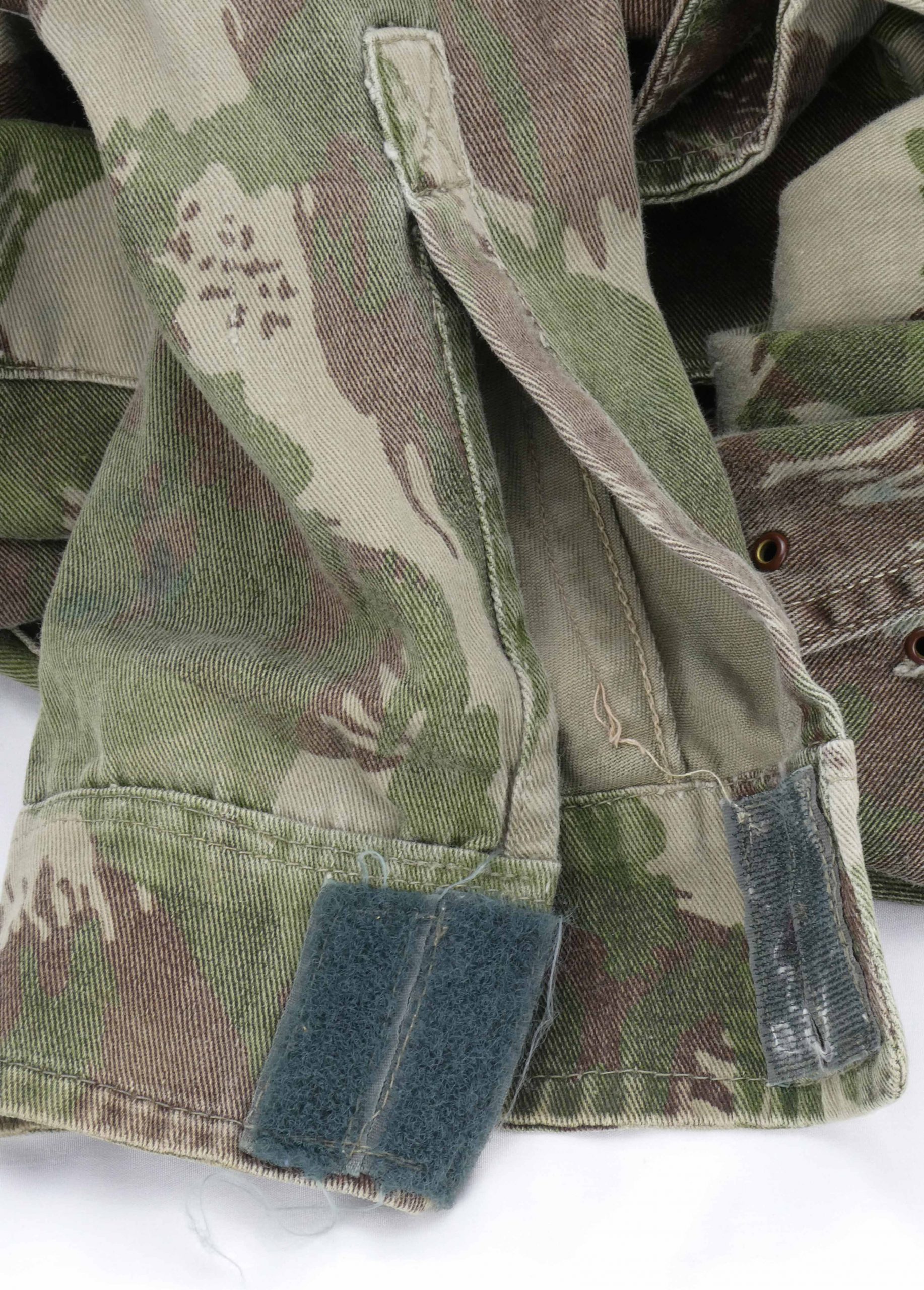
Shoulder:
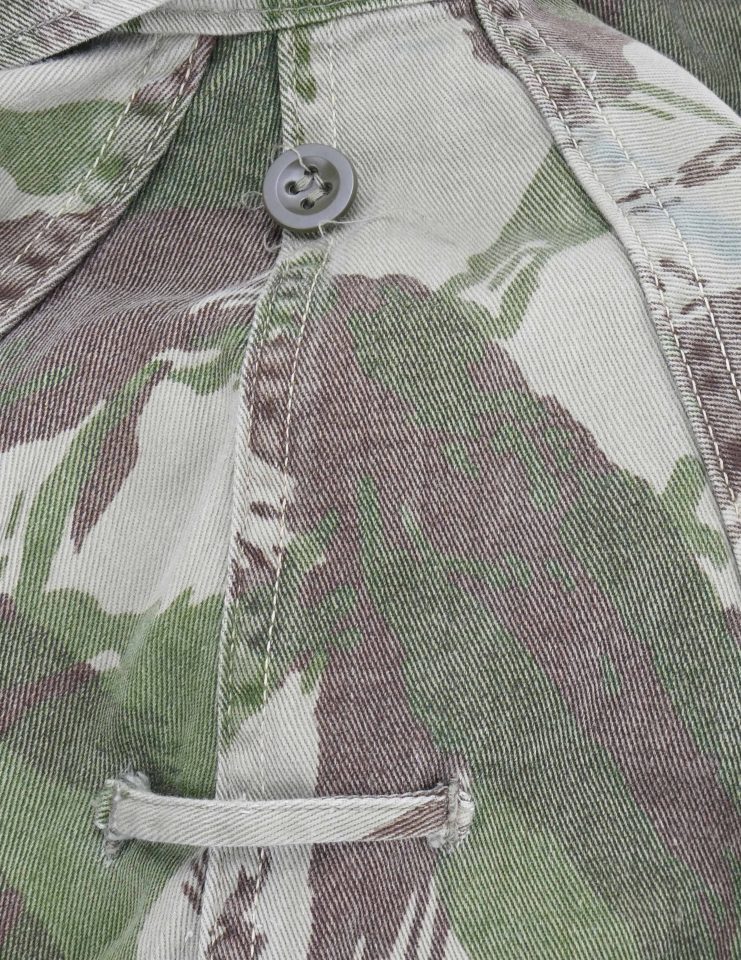
Shoulders have loop for attaching epaulettes like SAP jackets.
Armpit Vents:
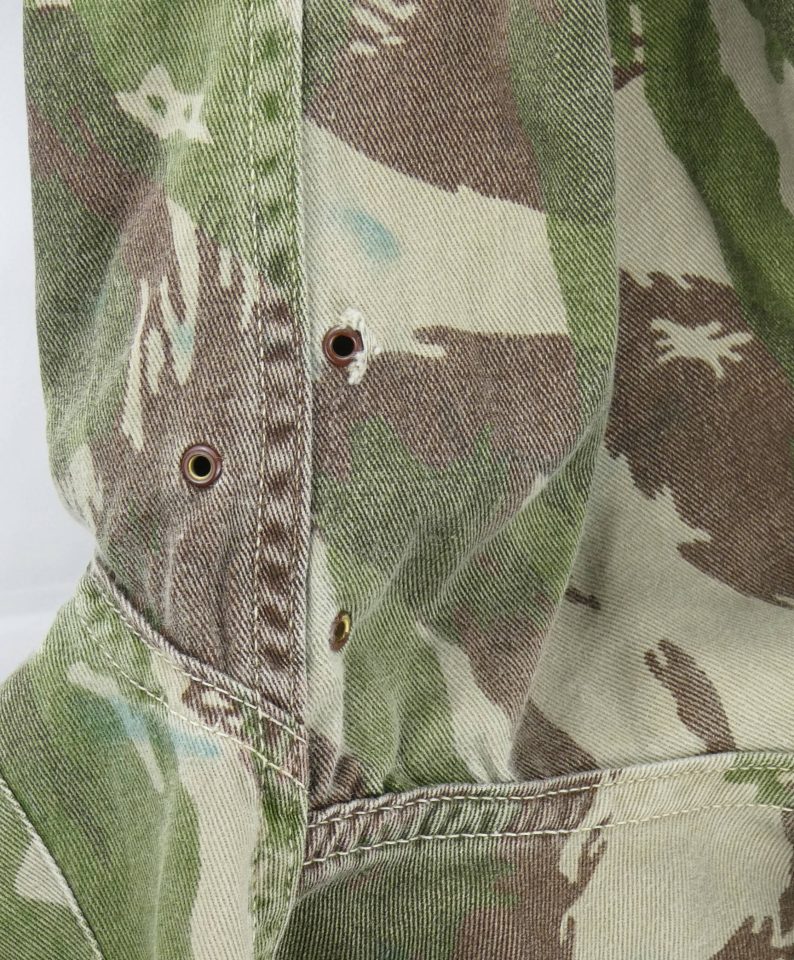
Insignia:
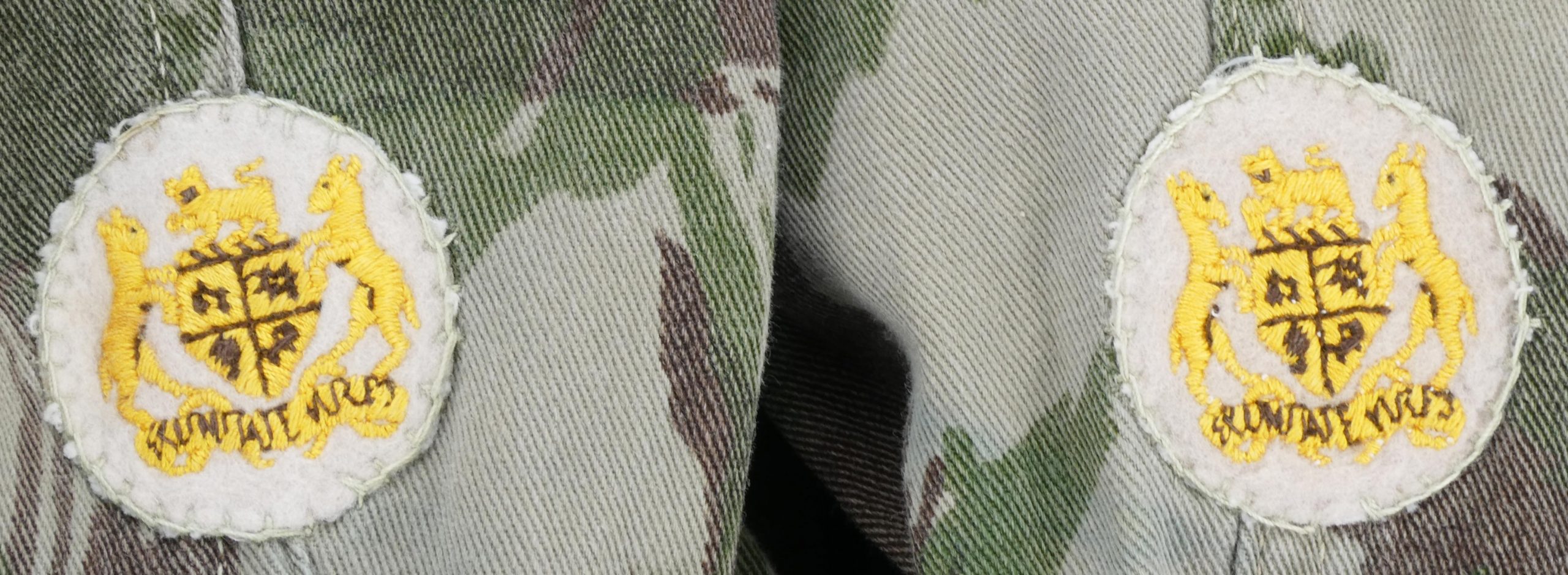
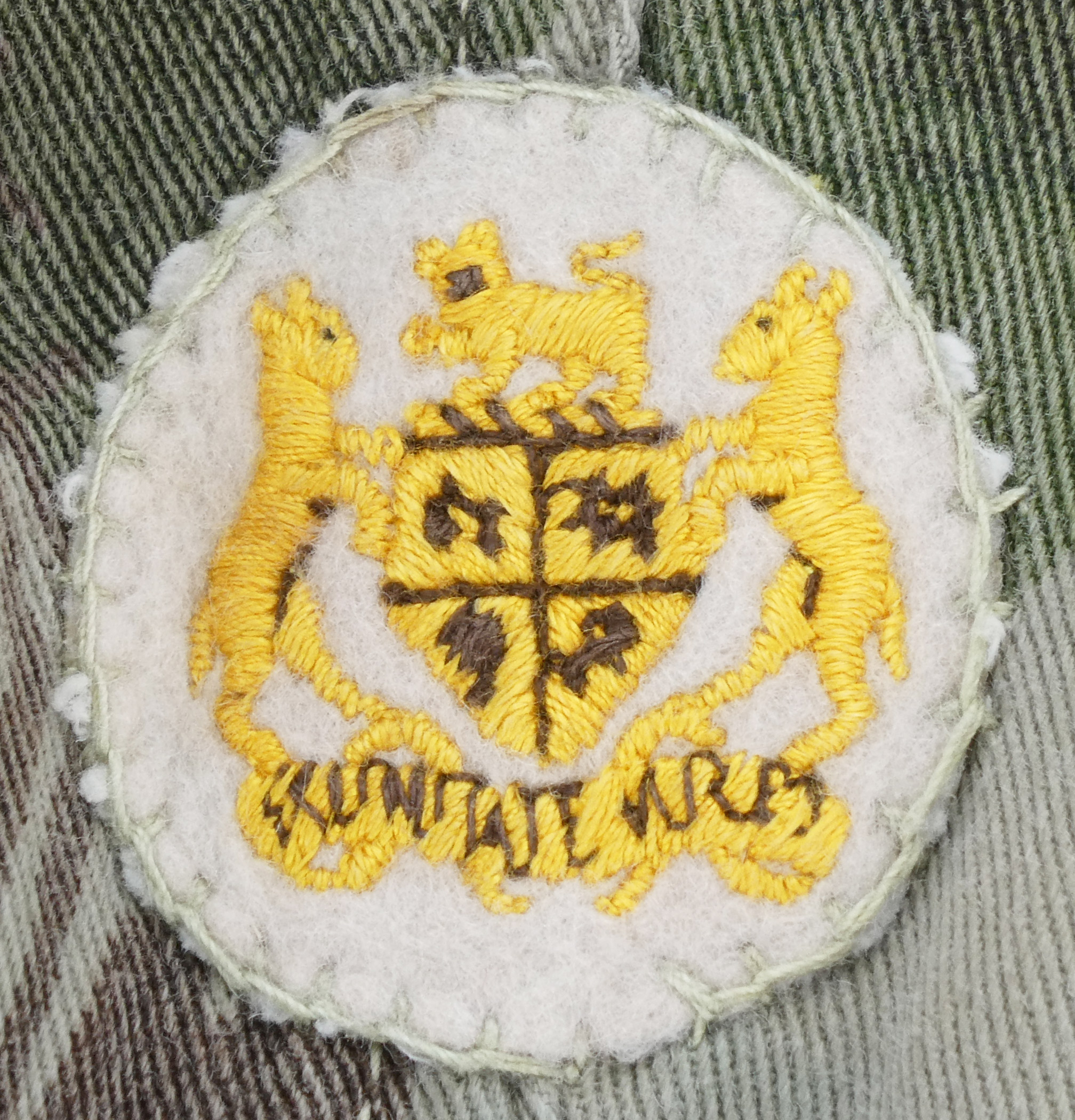
Arm patches are SADF Warrant Officer’s Insignia from before April 1974. This could possibly be explained by Hunter Group usage [2][3], which was active between 1968 – 1974[4] or 1976 [5].
Inside:
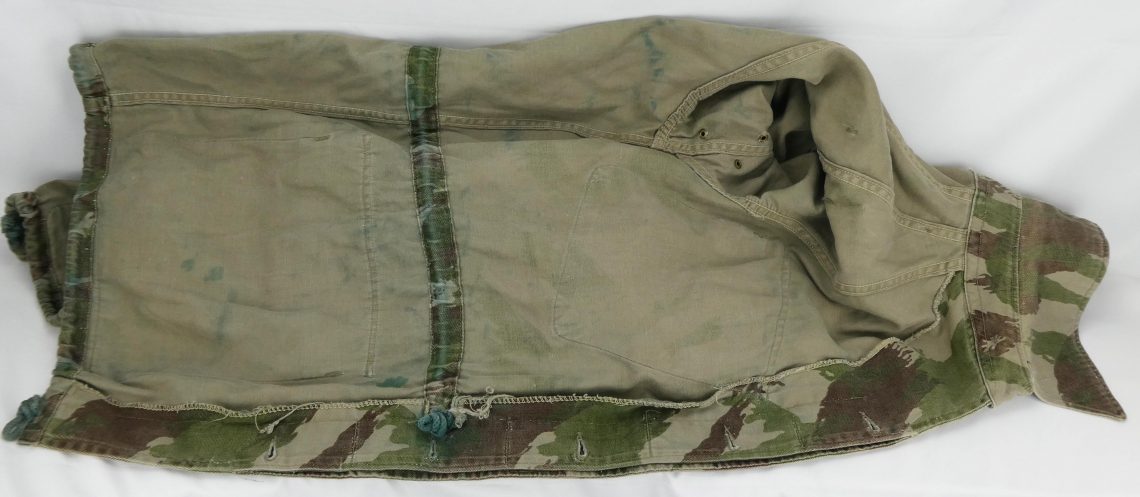
Trousers:
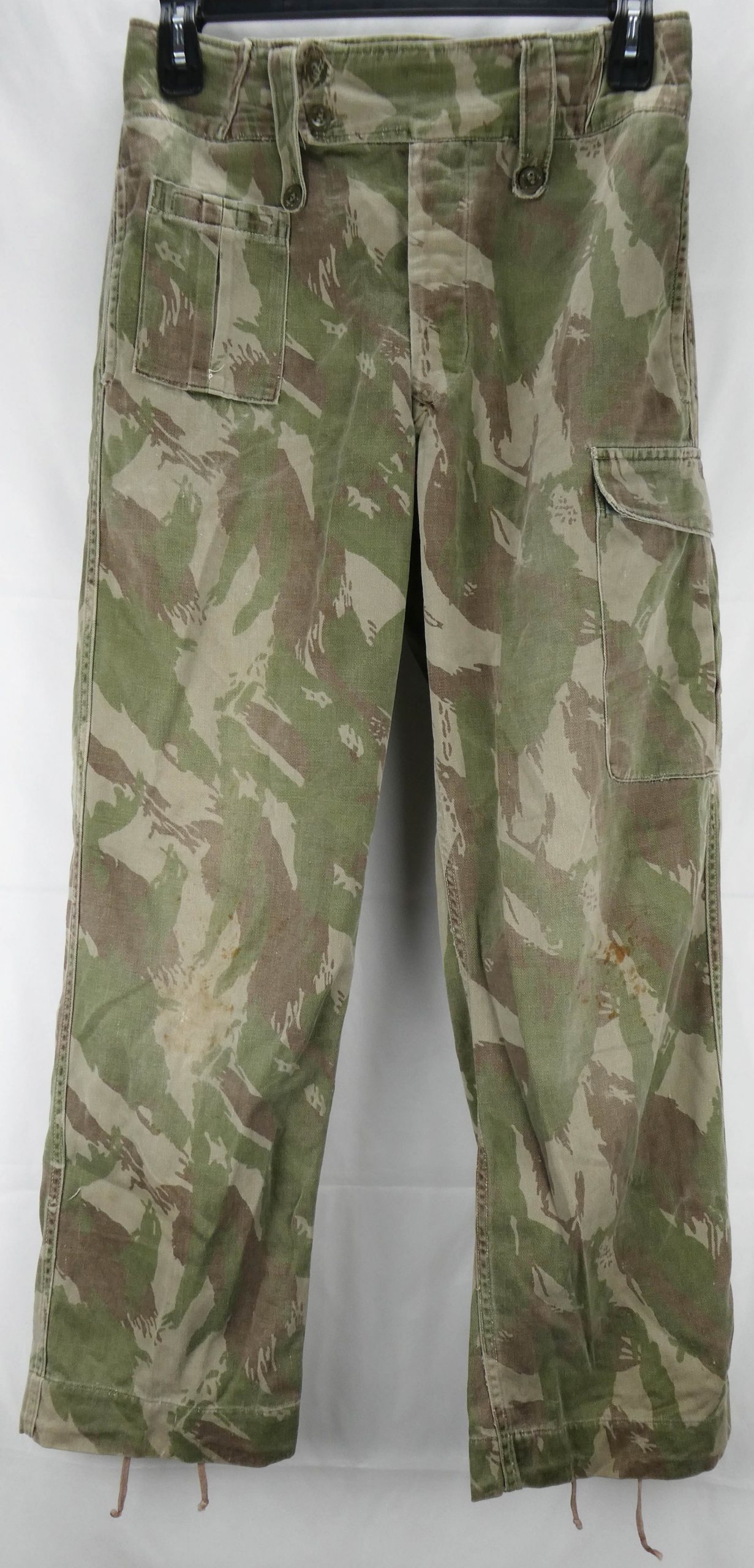
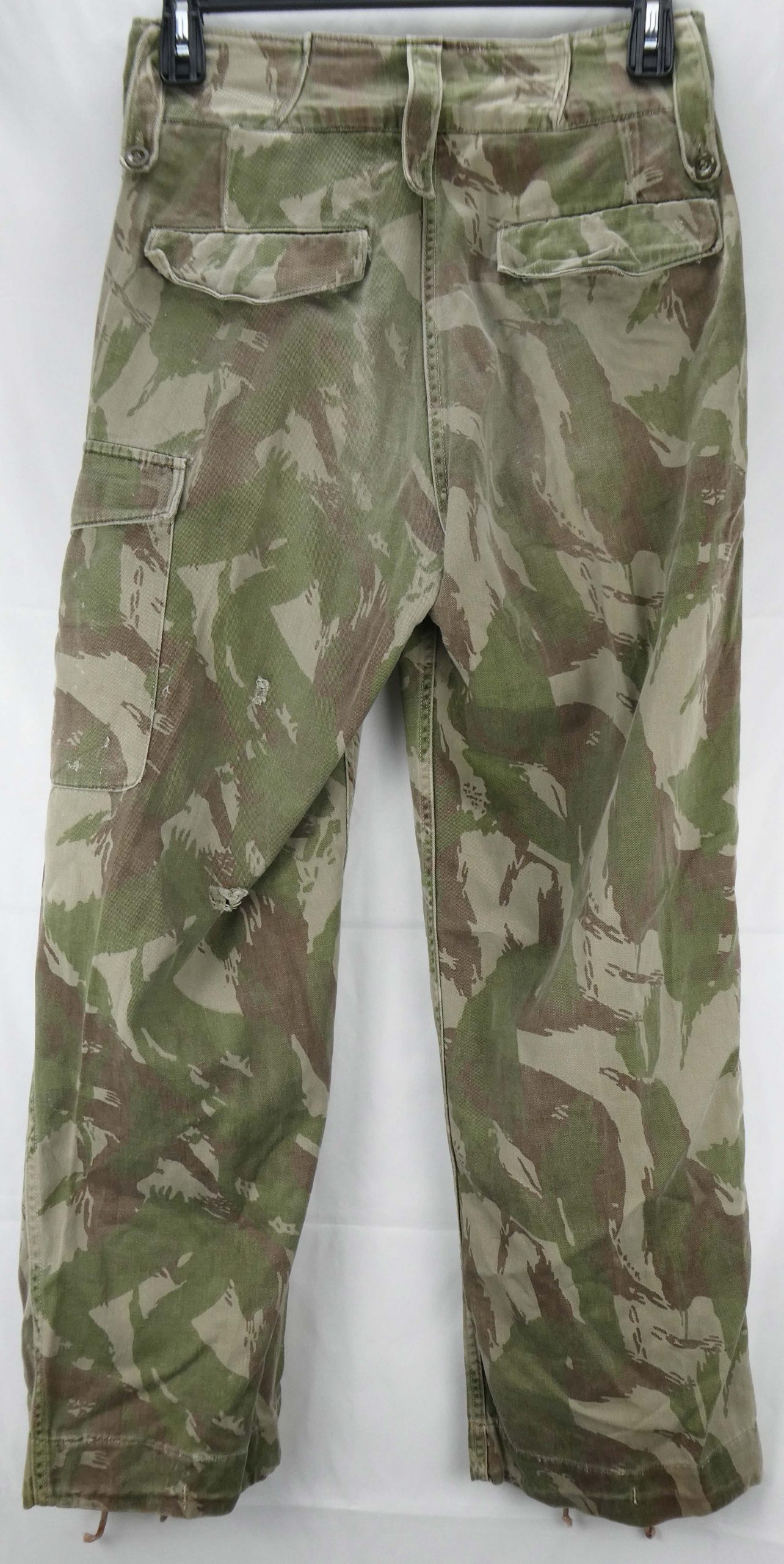
British Battledress style cut, as used in other standard Rhodesian trousers, except with velcro fasteners for the pockets.
Cargo Pocket:
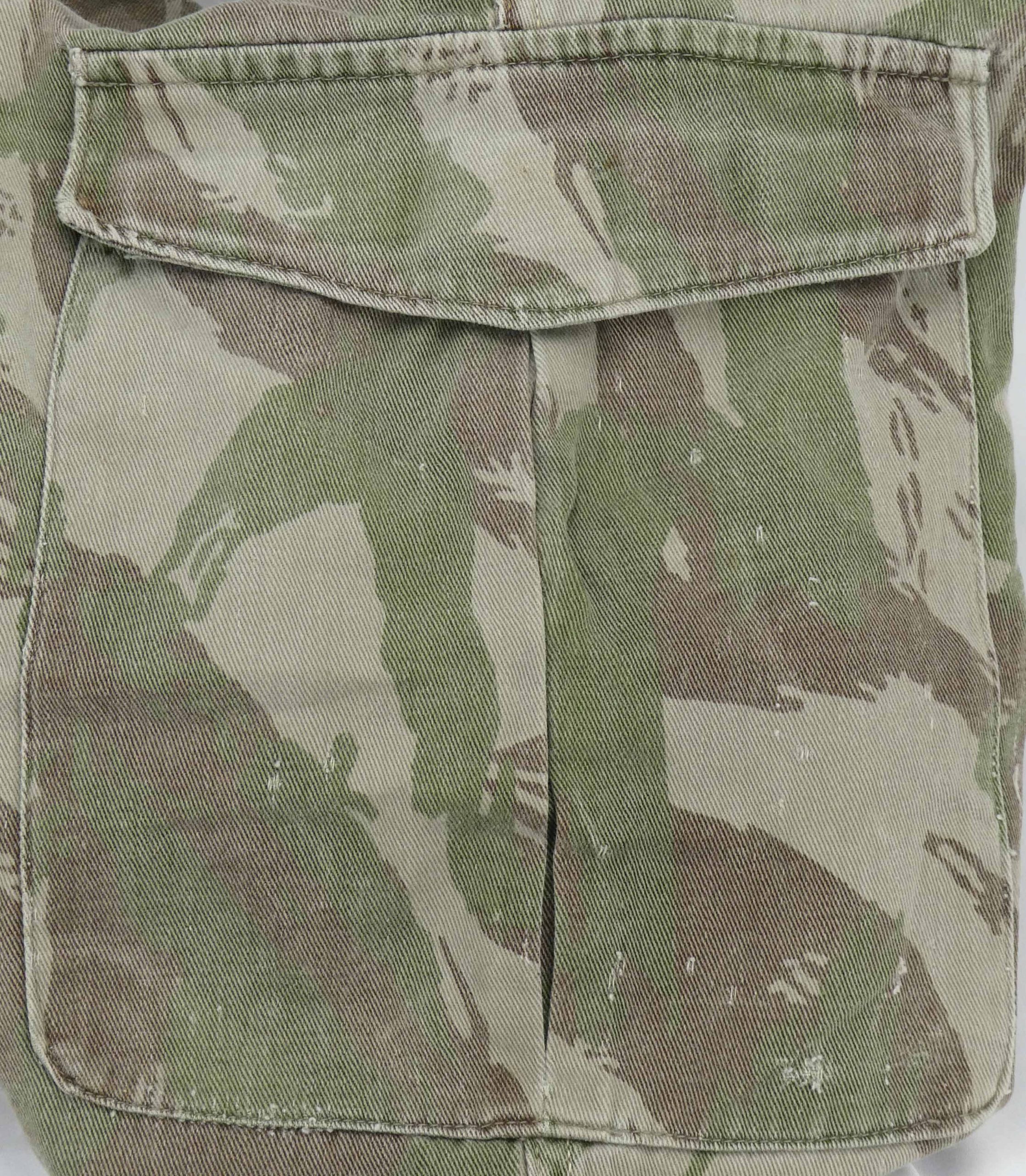
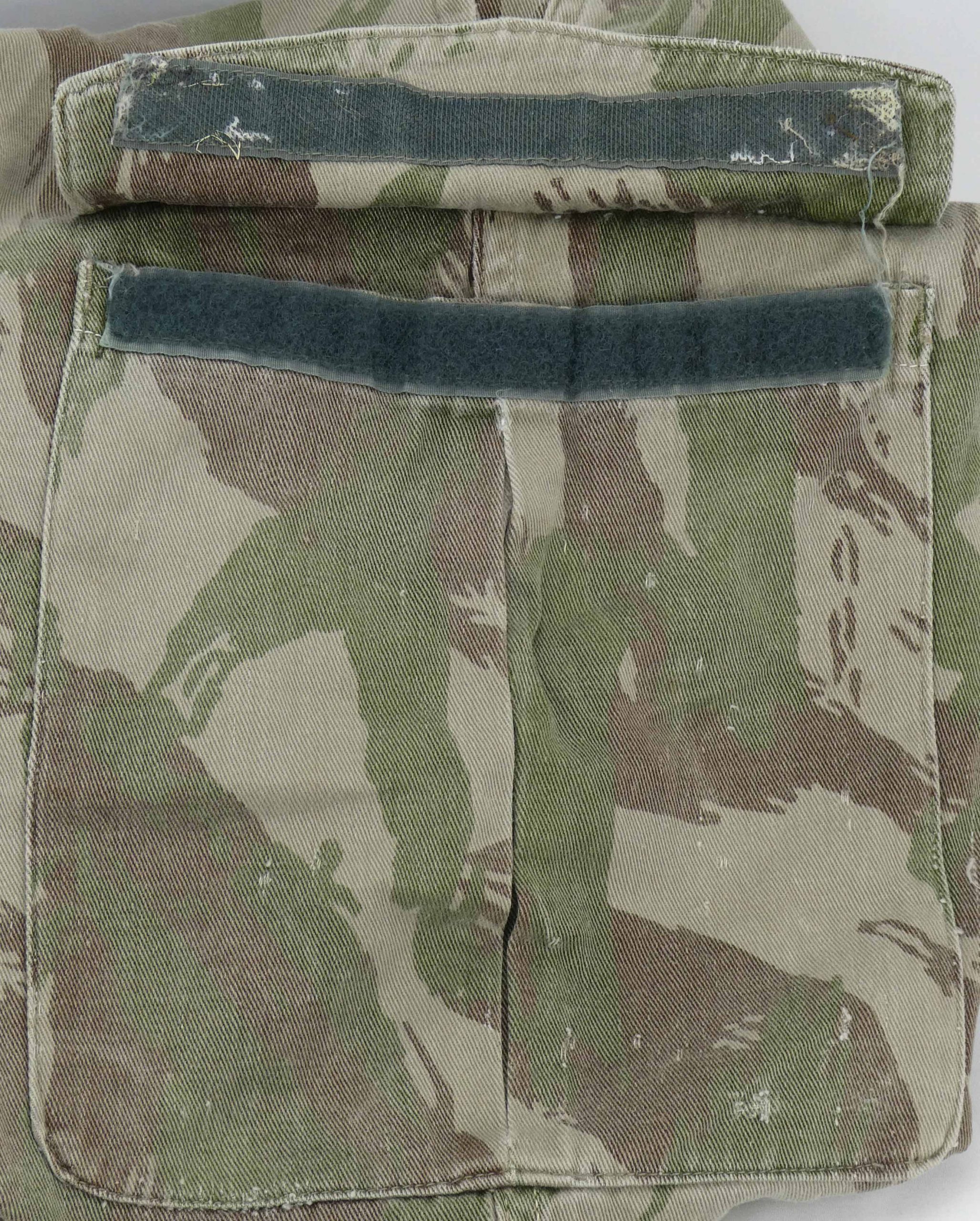
Back Pockets:
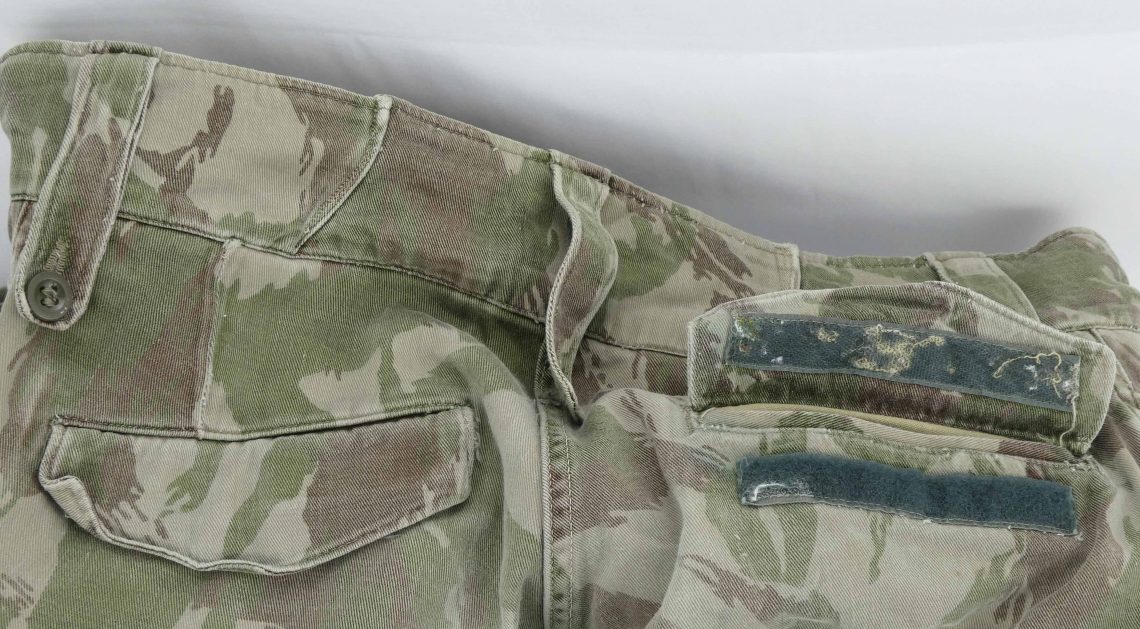
Thigh “Map” Pocket:
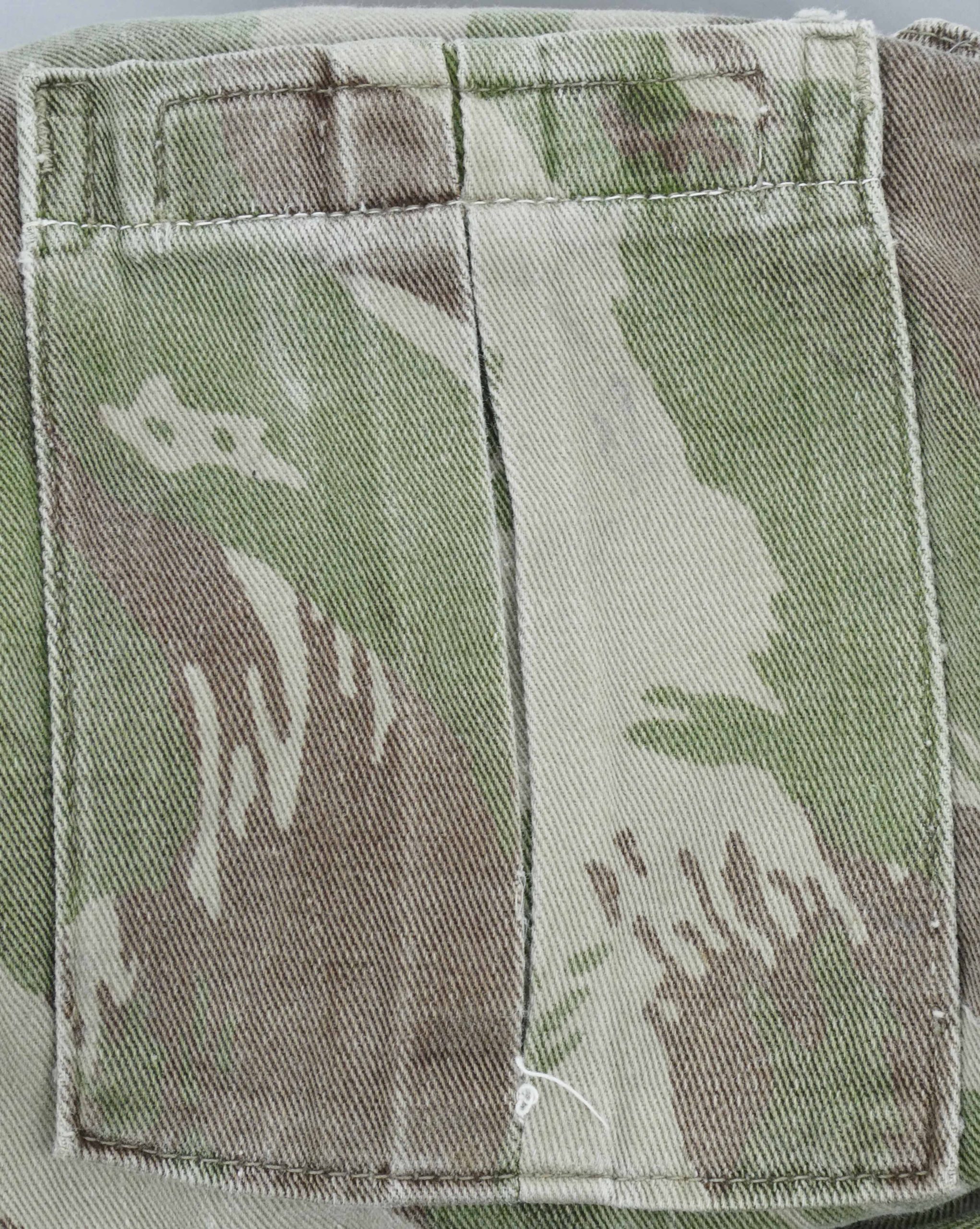

Belt Loops:
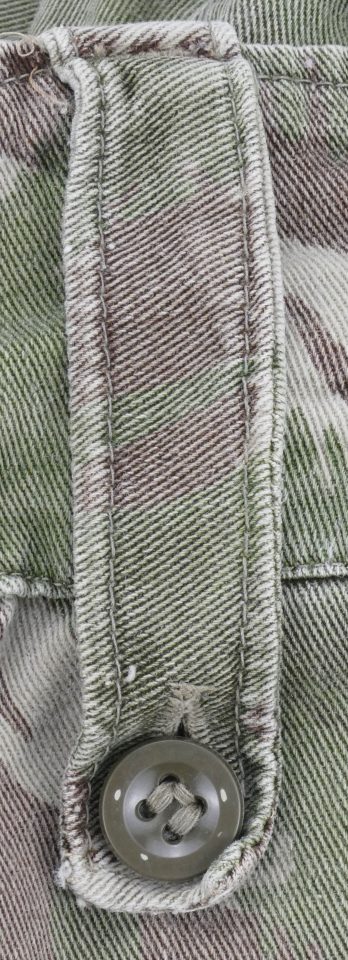
Ankles:
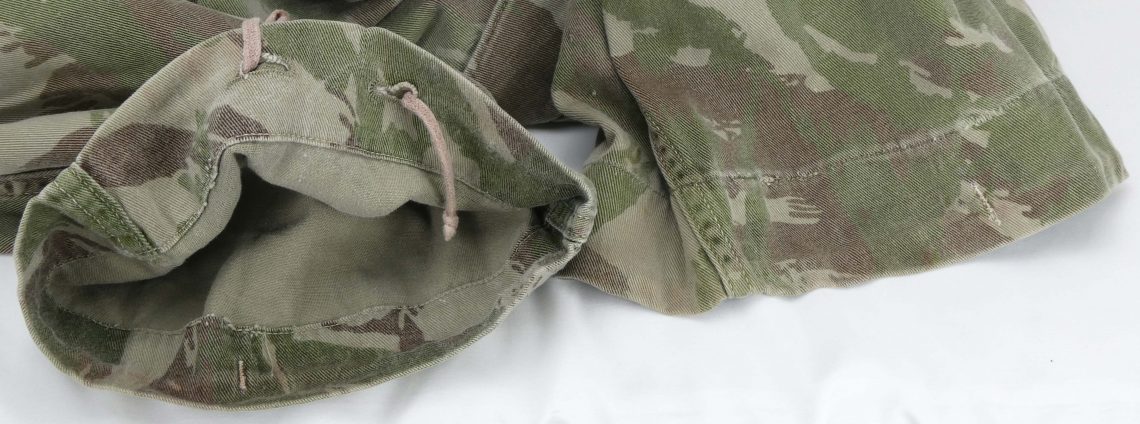
Inside:


Tags:

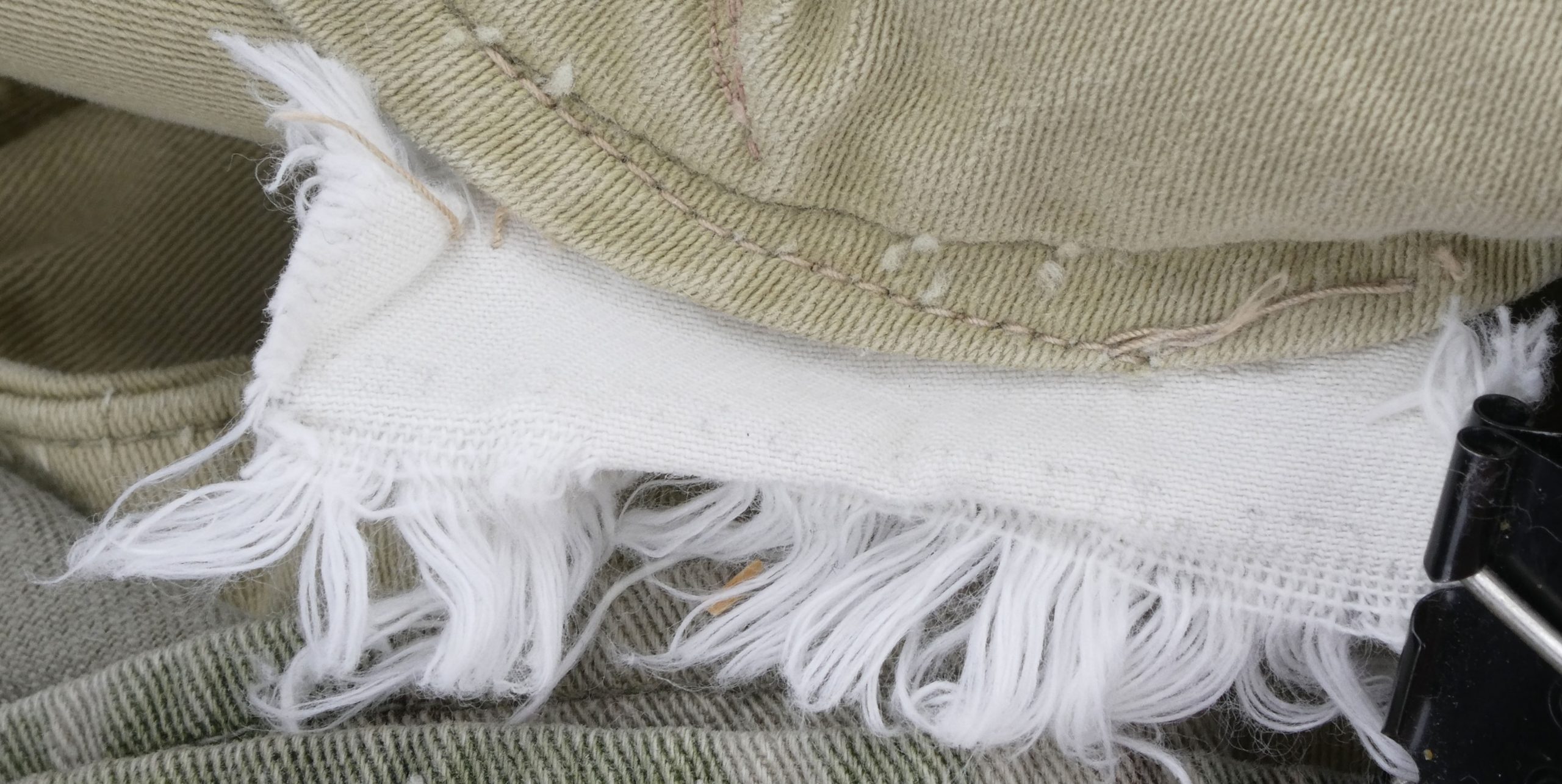
Item has a name written on a laundry tag. Tag more washed out than the jacket’s, but appears to also be dated 1969 and made by the same manufacturer.
Red Pattern (?):
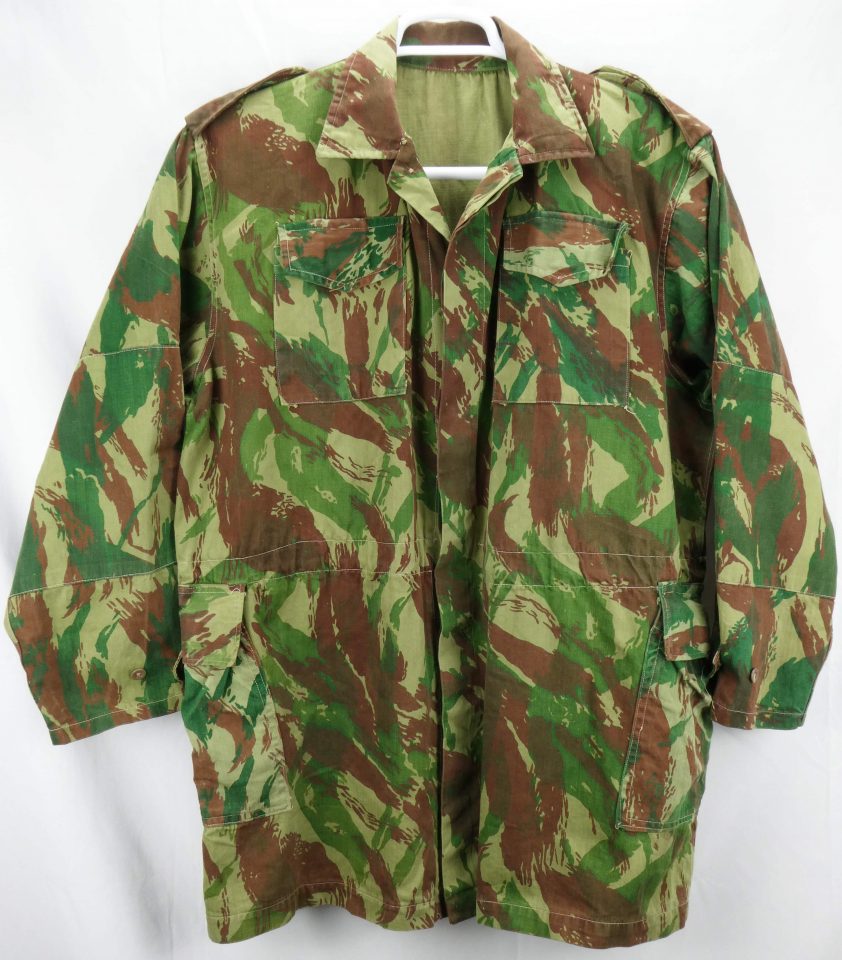
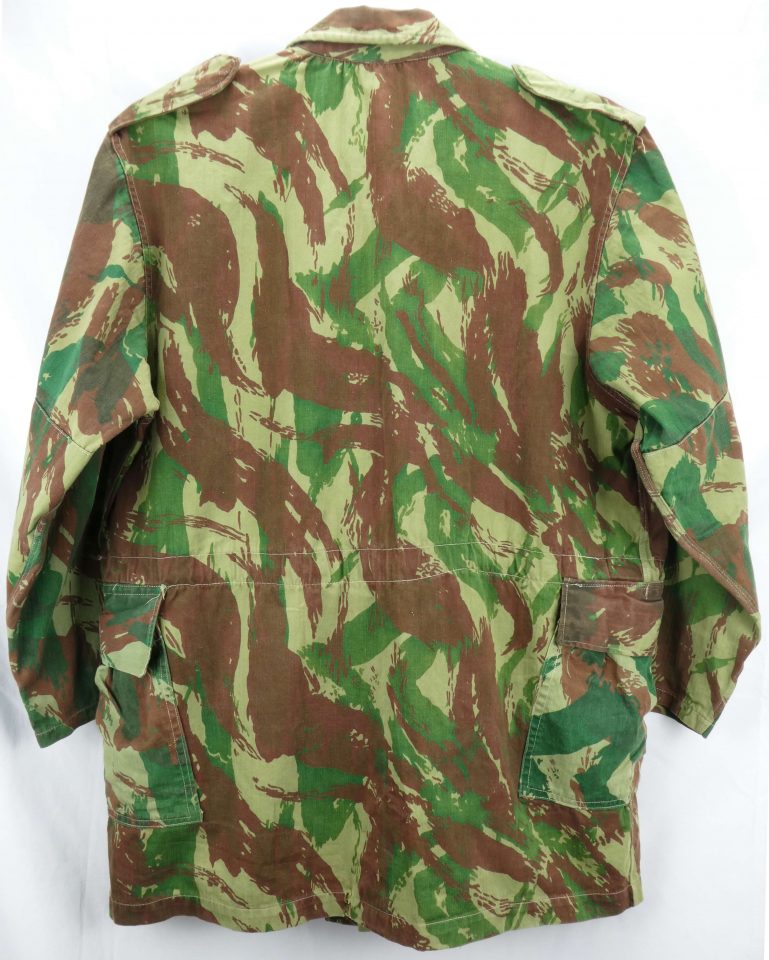
It is possible that this jacket was also used by the Gazankulu Bantustan since the pattern matches the swatches shown on Camopedia [6]. Gazankulu also happened to be located near the border of South Africa, Mozambique, and Rhodesia[7]. Despite having some advanced features such as hidden buttons and elastic pockets, the stitching is very crude. Items in this pattern could be the “red pattern” described in the The Black Boots on Page 73.
Provenance Information:
The jacket in this section is exactly the same jacket posted here as a “BSAP test” item from 1968: http://www.newrhodesian.ca/viewtopic.php?p=39014#p39014.
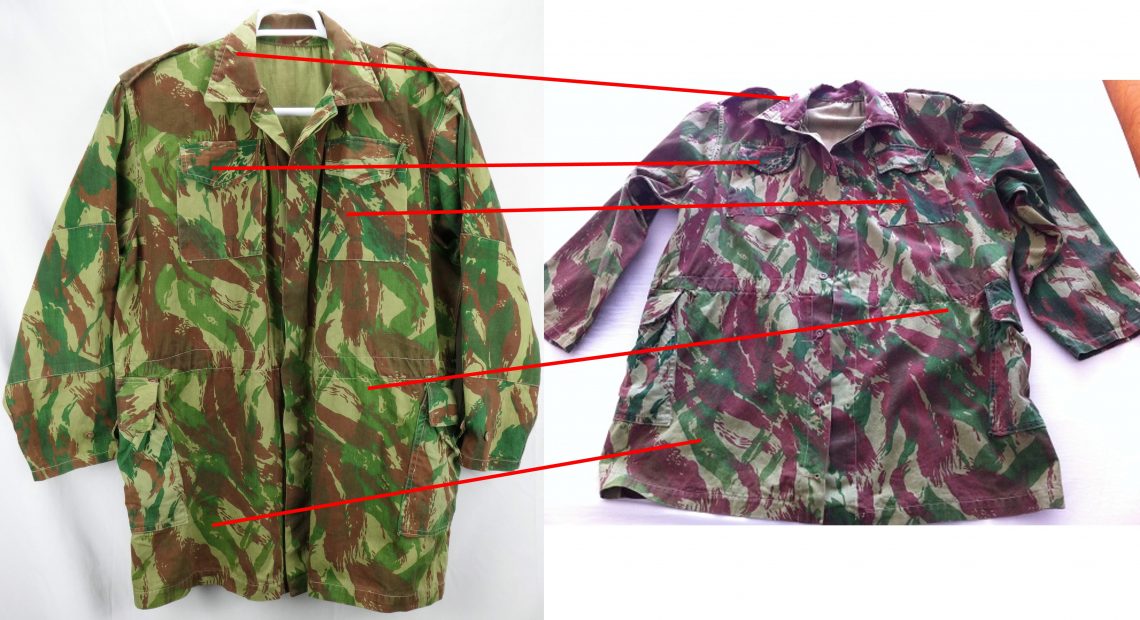
On the New Rhodesia forum, “Ausrhodie” says he got the jacket from a Rhodesian Air Force member whose uncle was in the BSAP (https://www.newrhodesian.ca/viewtopic.php?p=22041#p22041). The jacket was obtained by Kommandopost.com in June 2022 from an Australian seller on eBay who claims his father, who served in the Rhodesia Regiment received it in a trade with a Portuguese soldier near the Mozambique border in 1975, shortly before Portugal withdrew from its colonies due to the Carnation Revolution [8].
Another similar jacket has been found with a South African coin dating to 1968 and the name “Rusape”, an Eastern Zimbabwean town written on the inside[9]; the source also notes that the cut is similar to the Brazilian Marines uniform [10].
Chest Pockets:
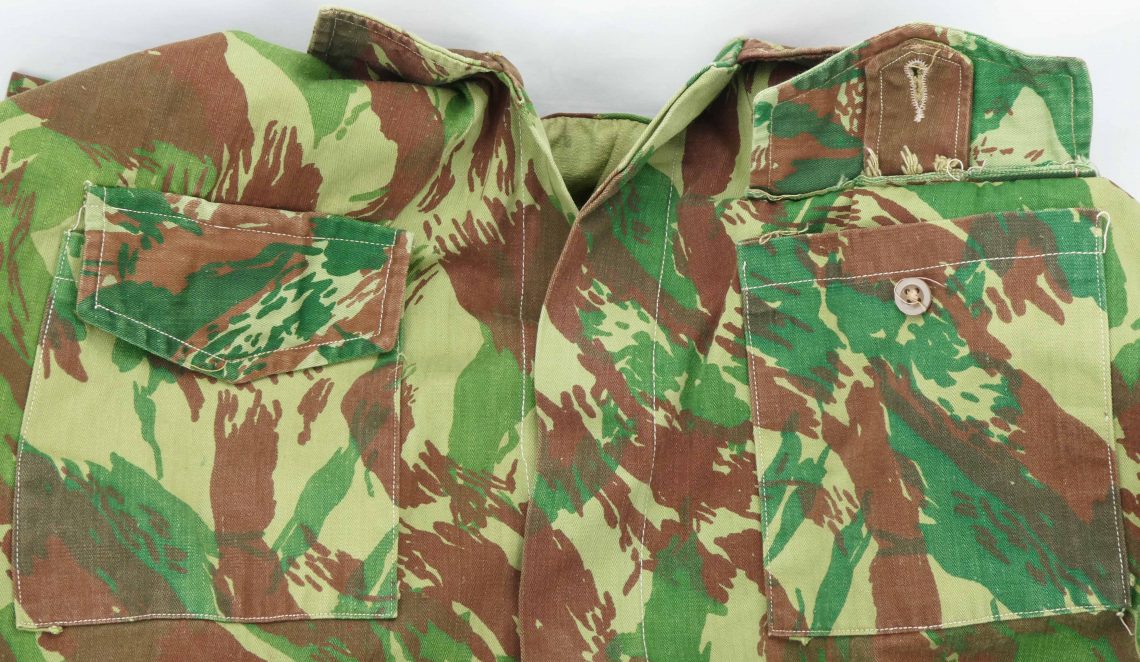
Lower Pockets:
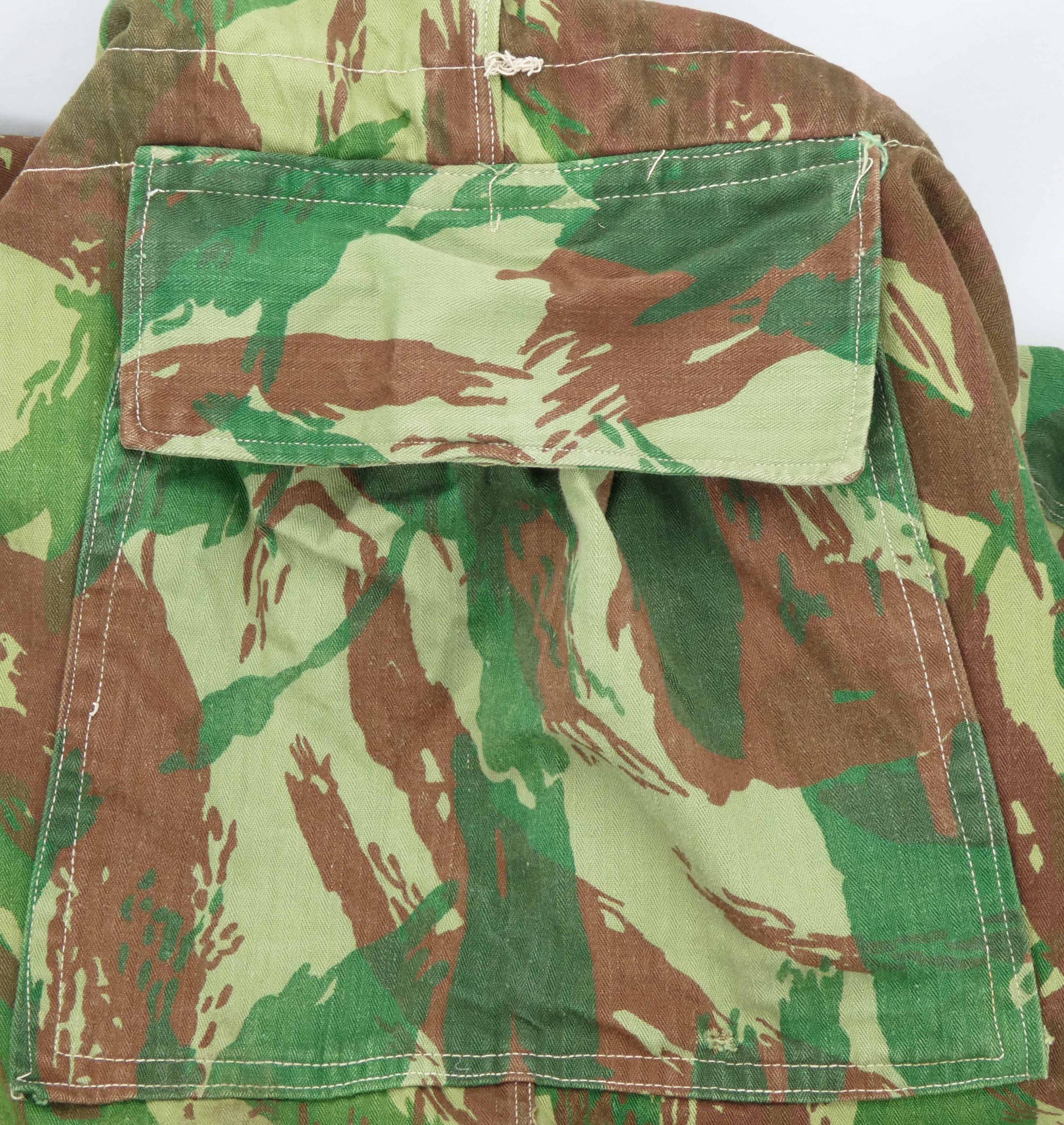
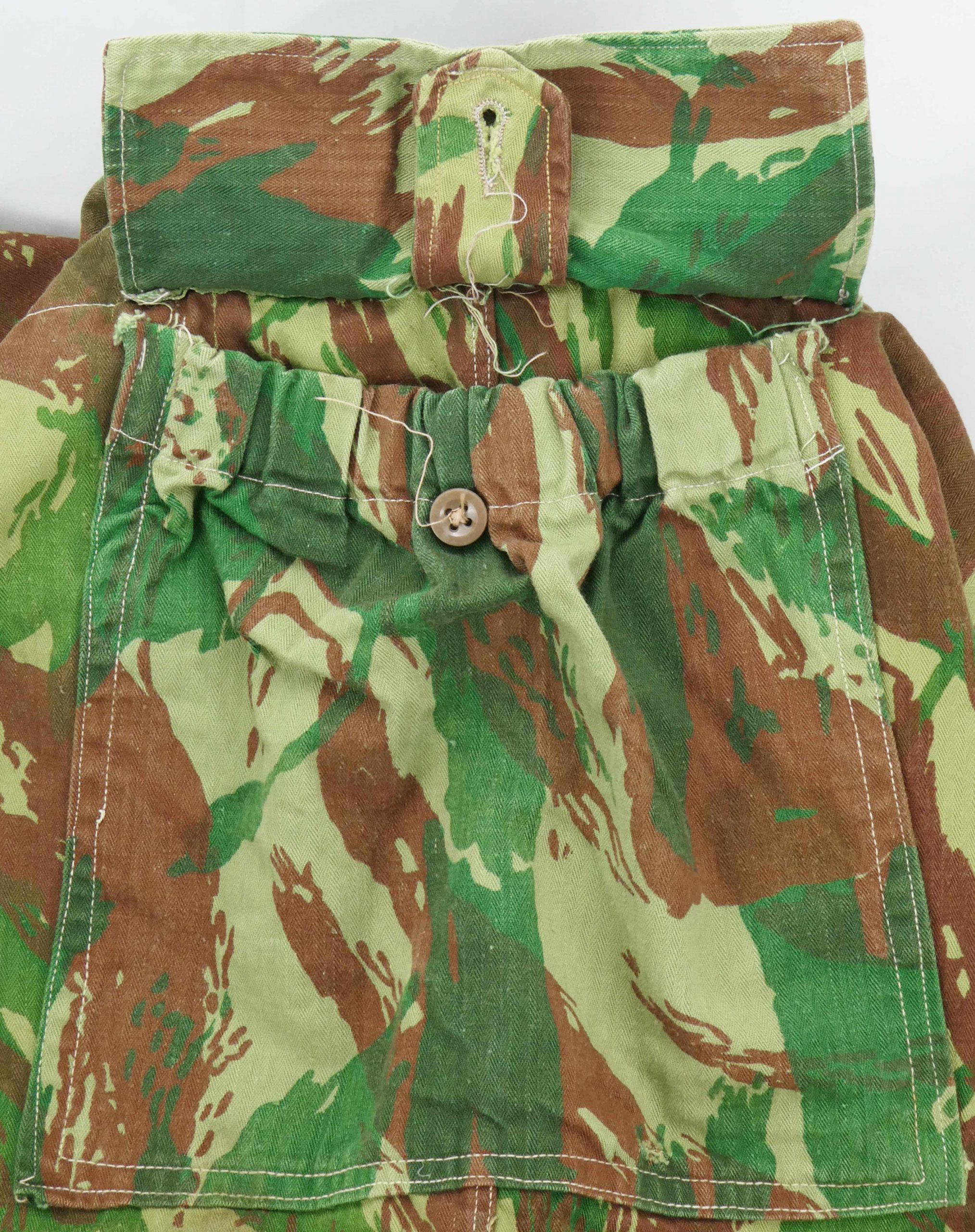
Unlike Portuguese jackets, the lower pockets are on the side of the body and have elastic at the mouth.
Button:
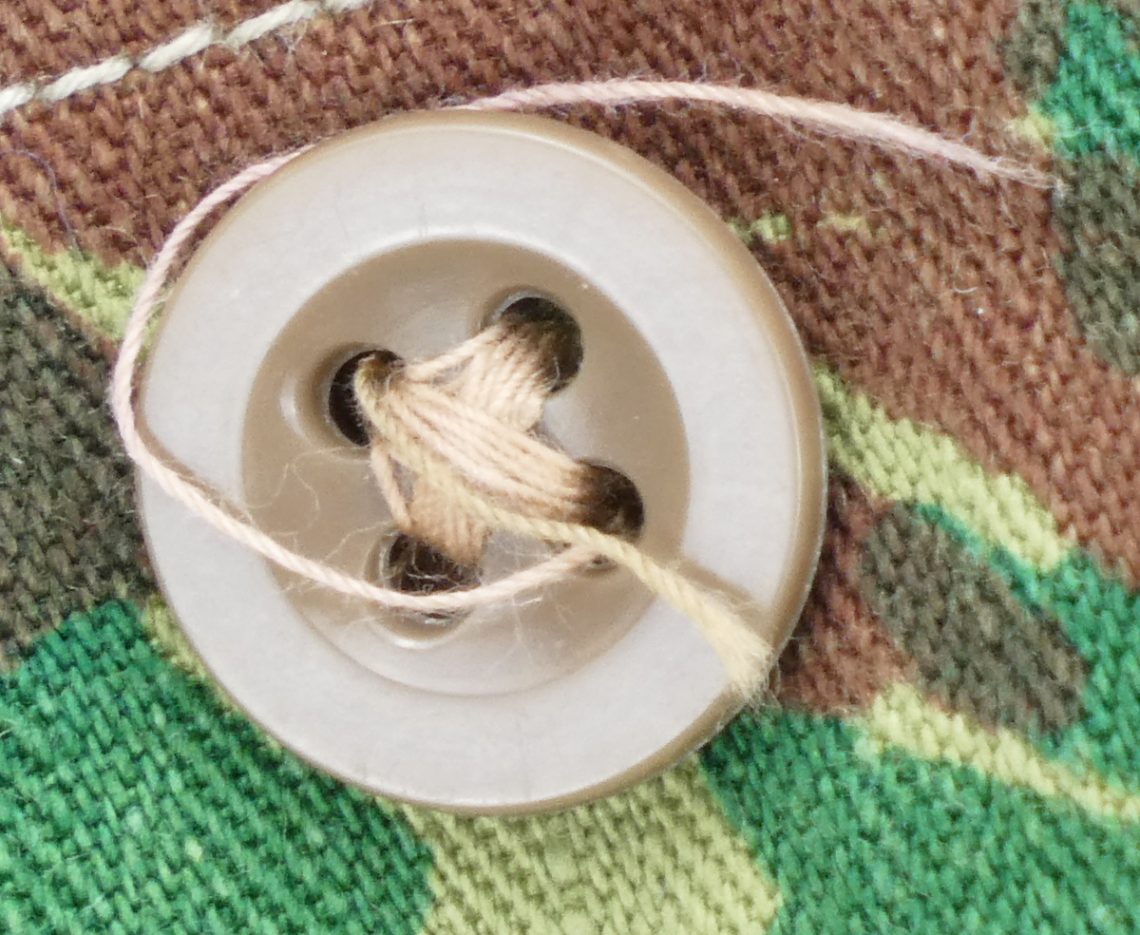
British style plastic dish buttons.
Stamp:
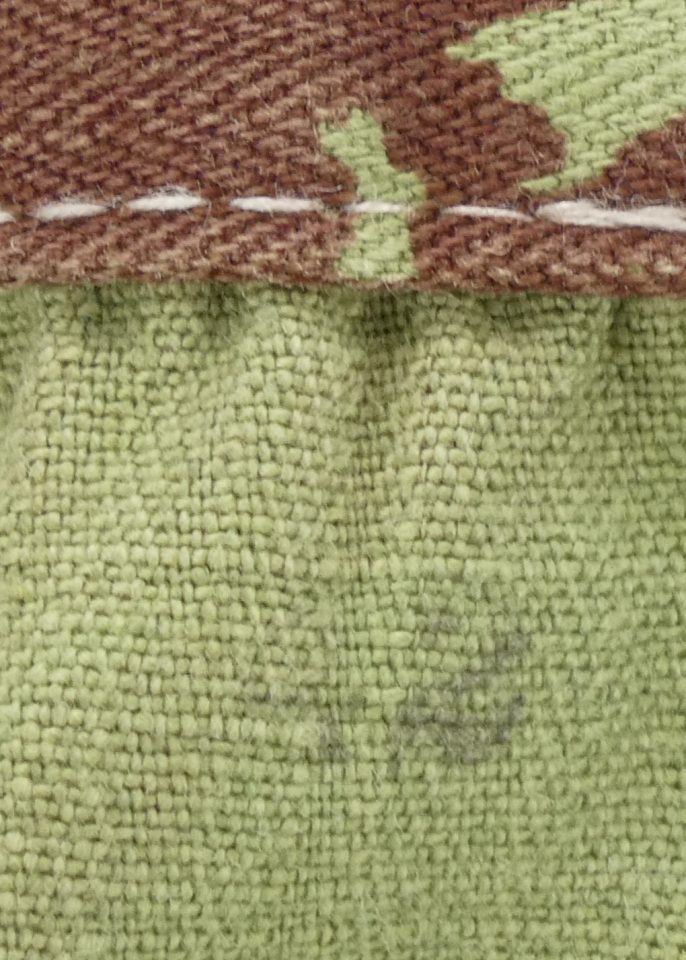
Possibly the size on the inside back.
Inside:
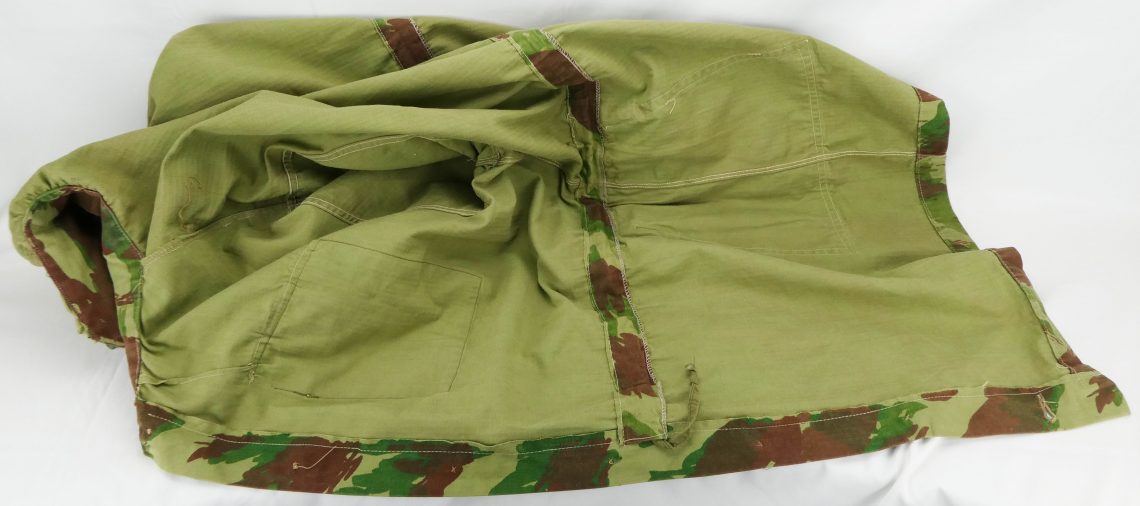
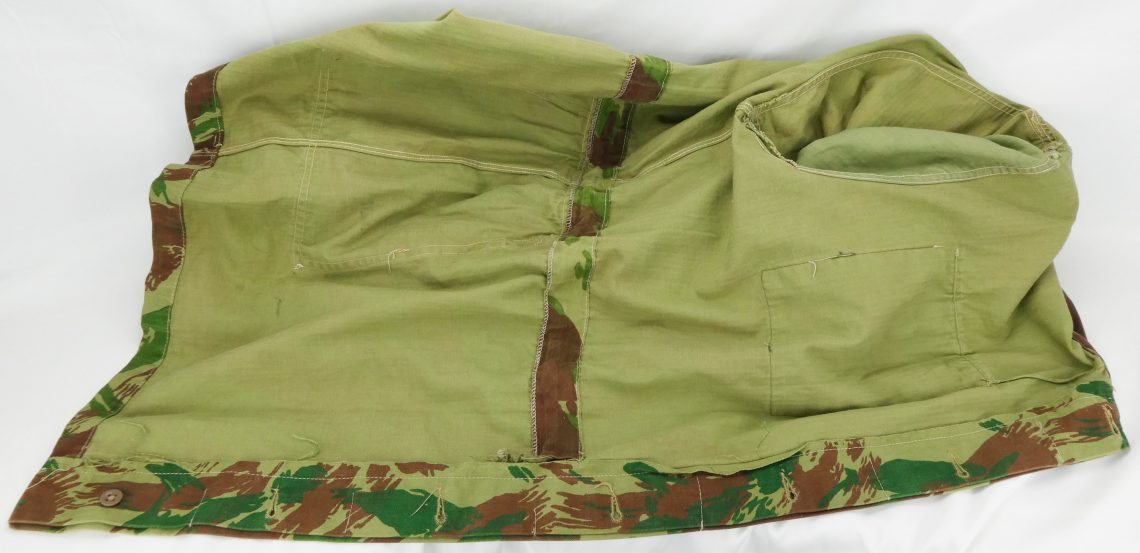
Bottom Loop:
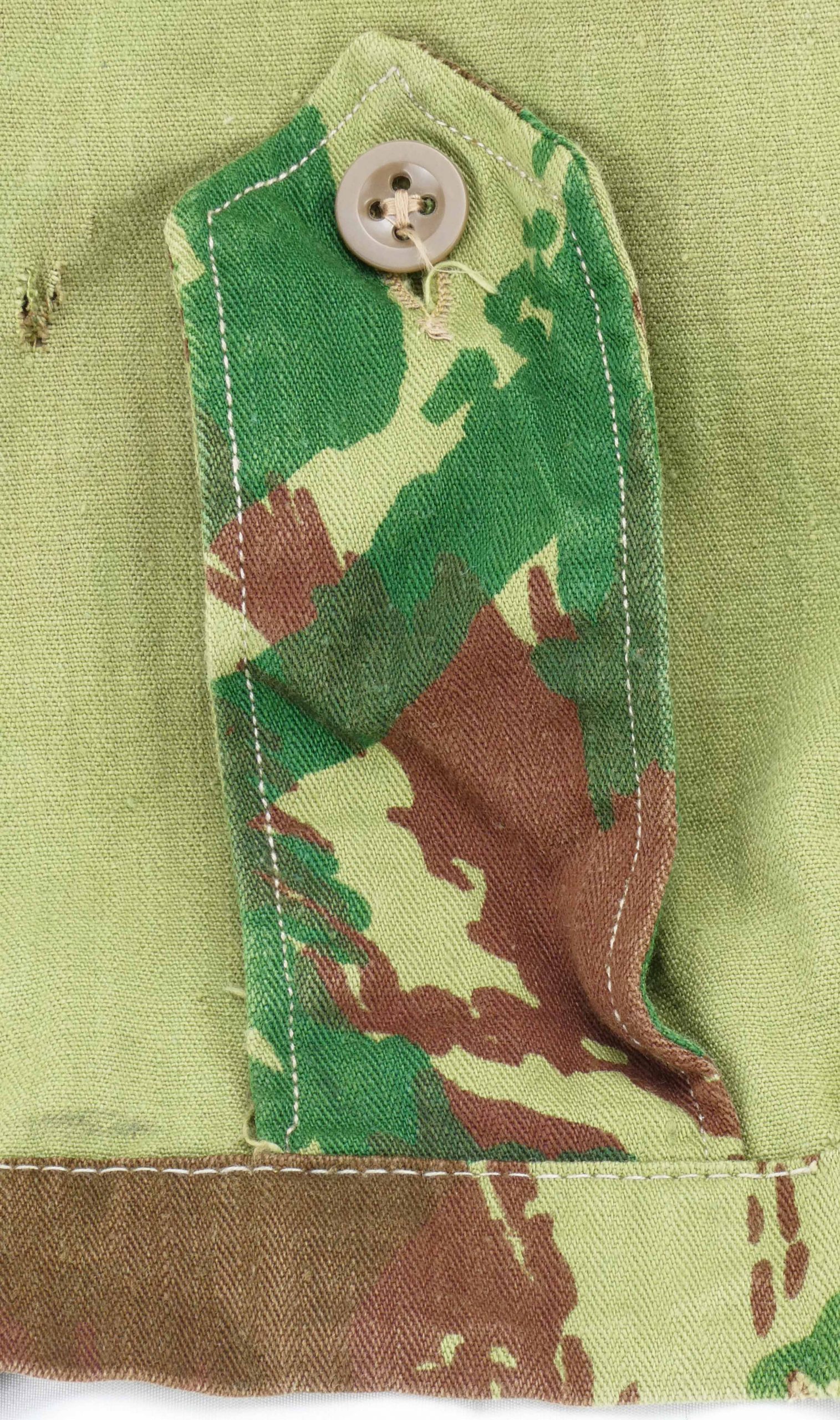
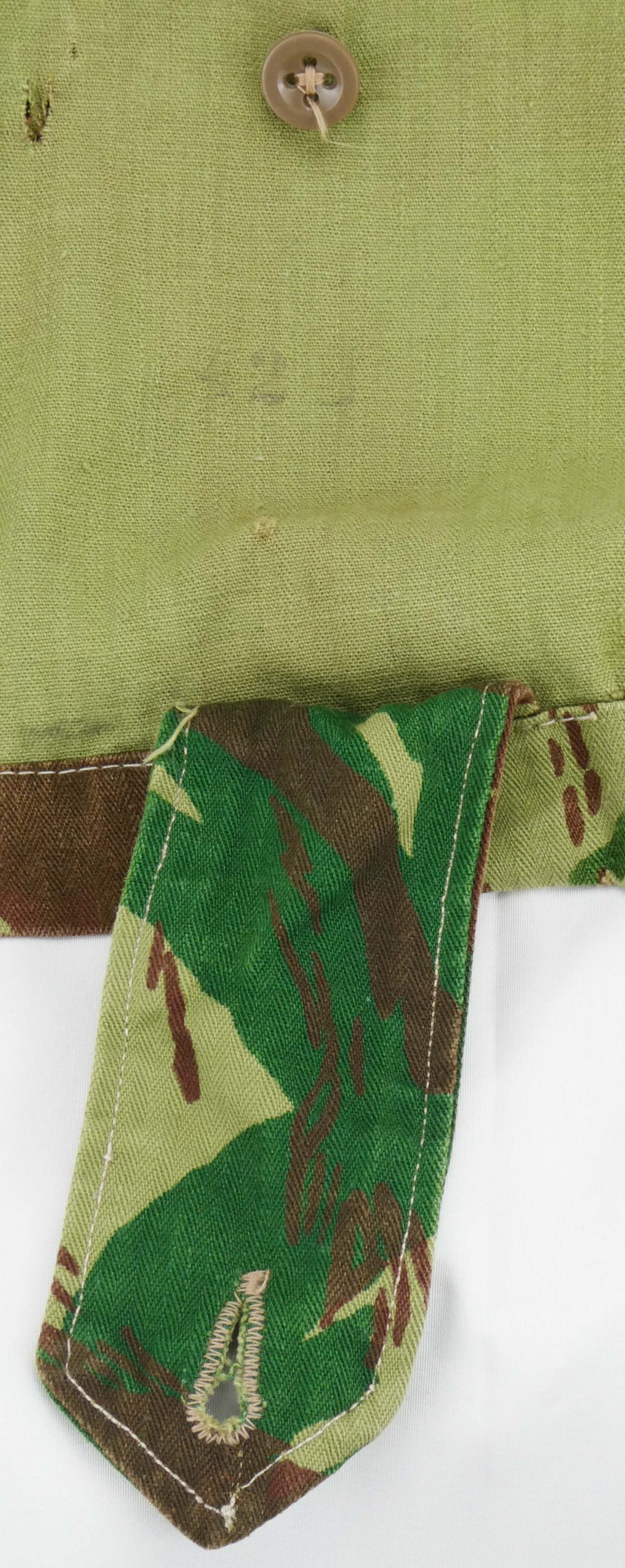
The buttoned loop at the bottom does not appear on any Portuguese or other Rhodesian items. Its purpose is unknown.
Epaulettes:
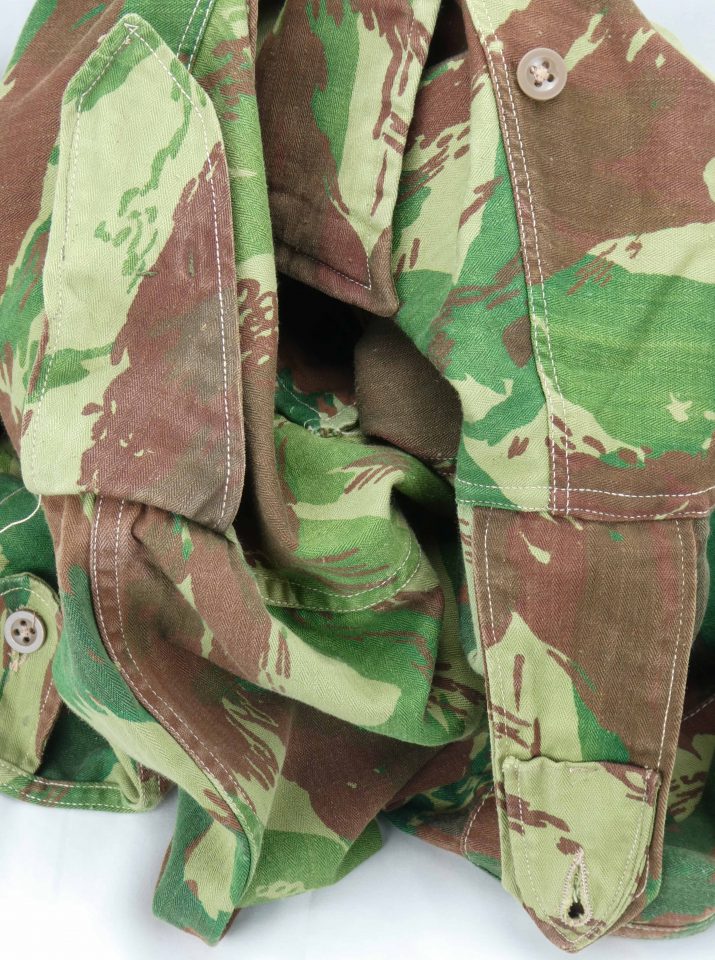
Cuffs:
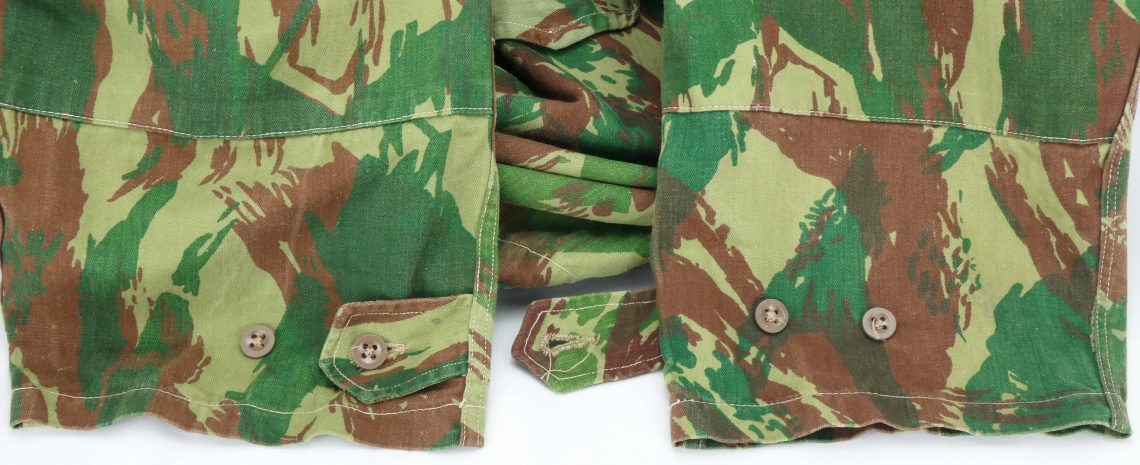
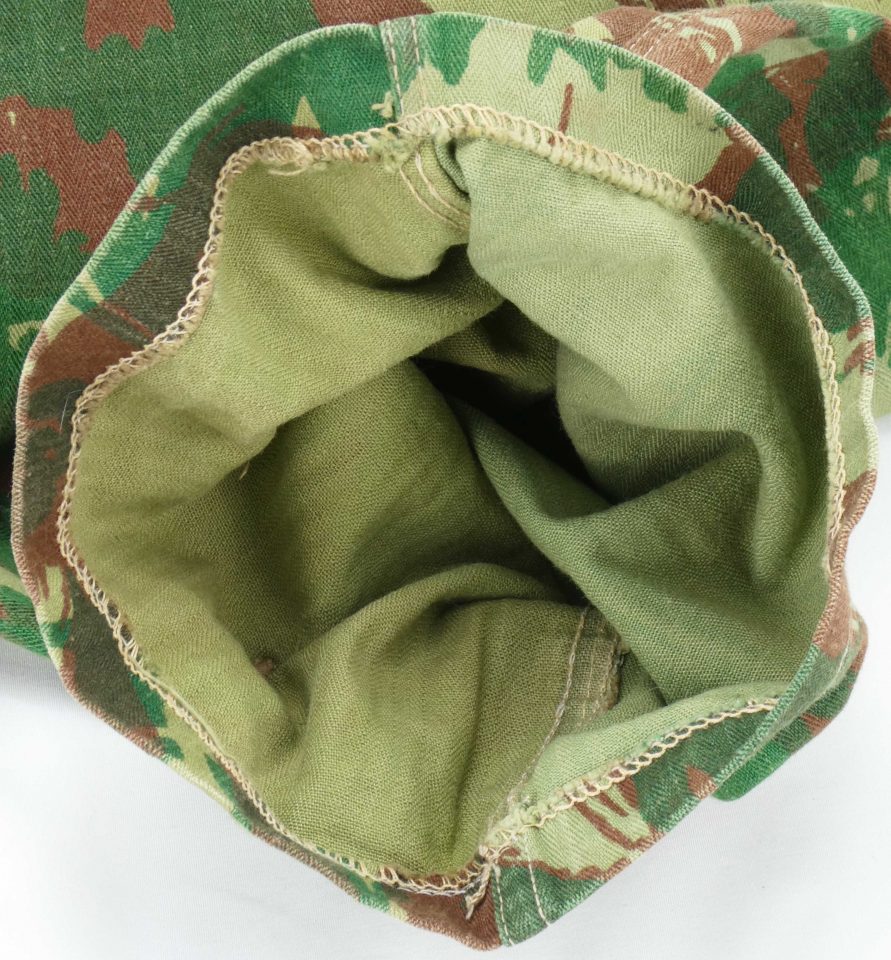
Usage Photos:
Given the short time period this camouflage pattern was used, there are very few photographs from the Rhodesian era. However, more have been found recently (as of 2021).
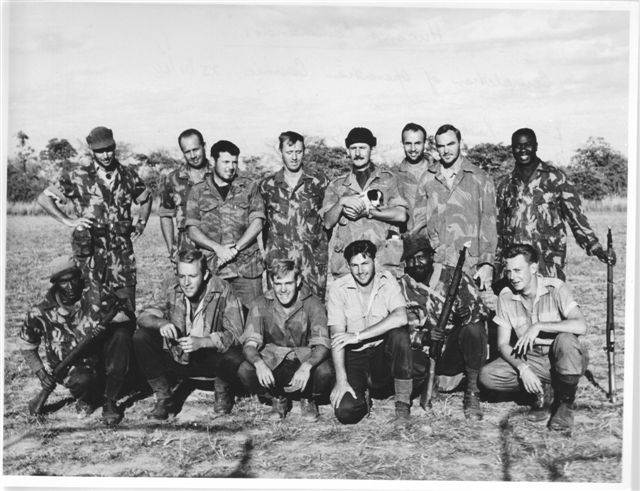
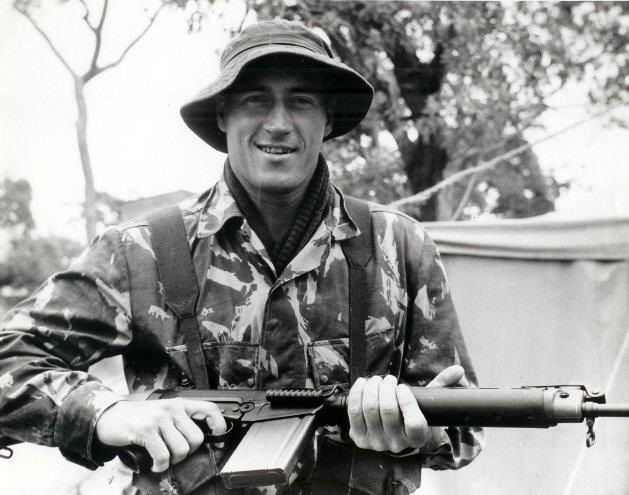
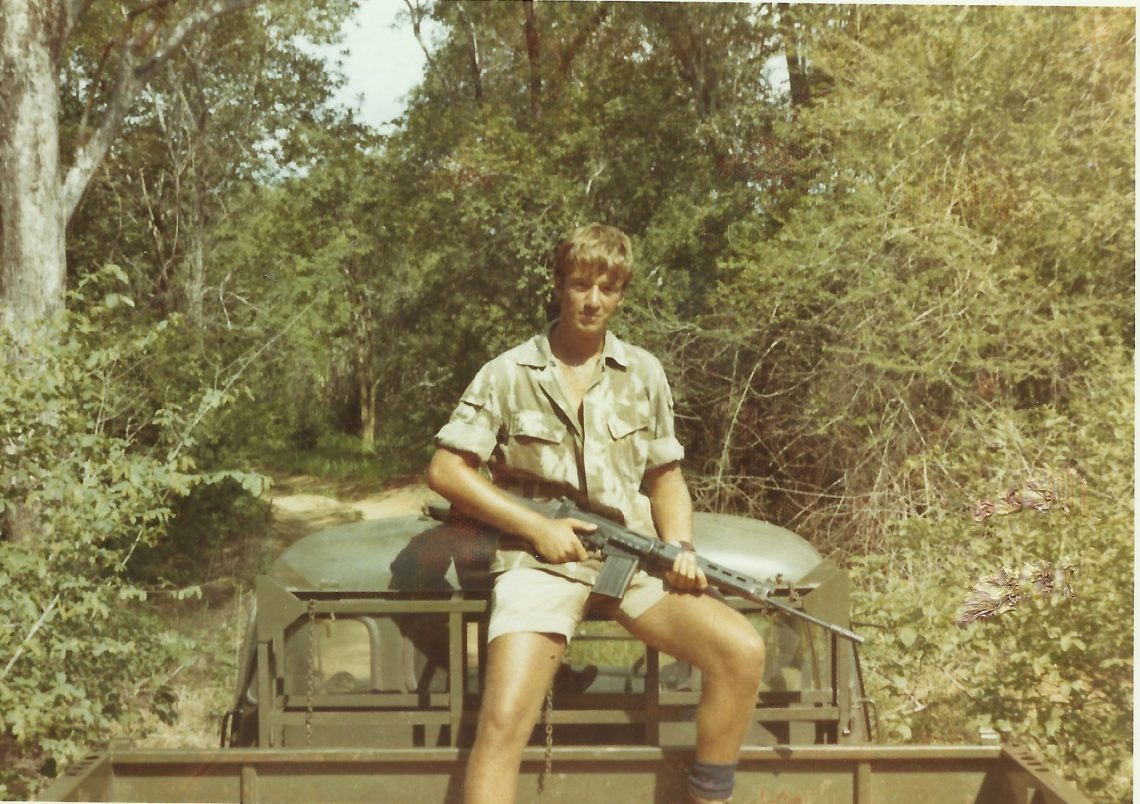
The jacket in the 1973 Zambezi Valley photo was modified by moving the lower pockets to the arms, removing the snaps on the pockets, and adding a hood. Detailed photos below were provided by the author of the Reverse Pass sports blog (https://reversepassblog.wordpress.com/about/), Terence Dale Lance and are posted here with his permission for informational purposes.[14]
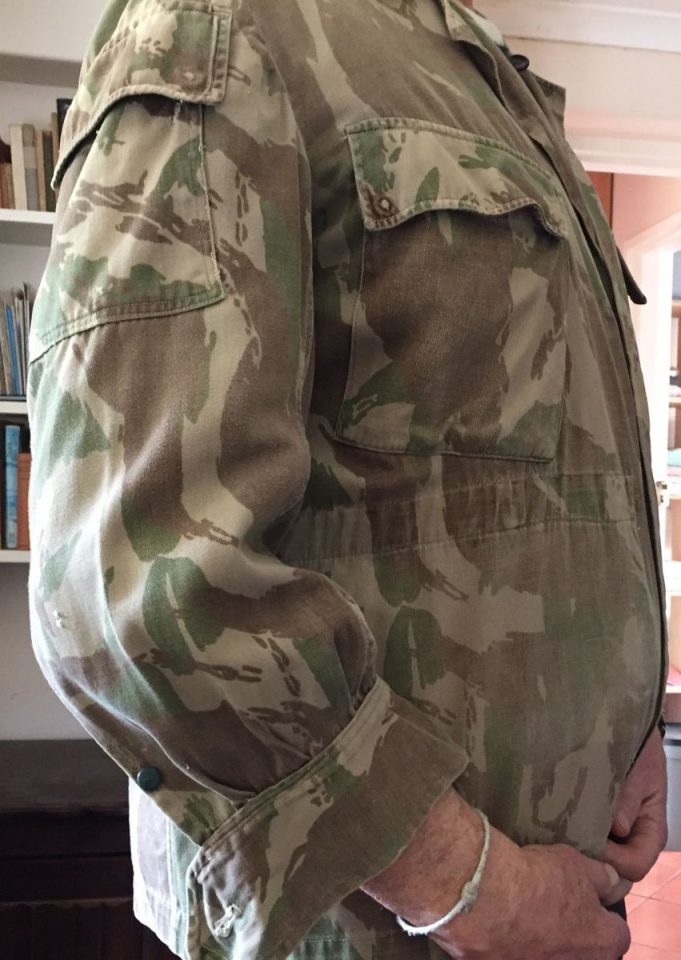

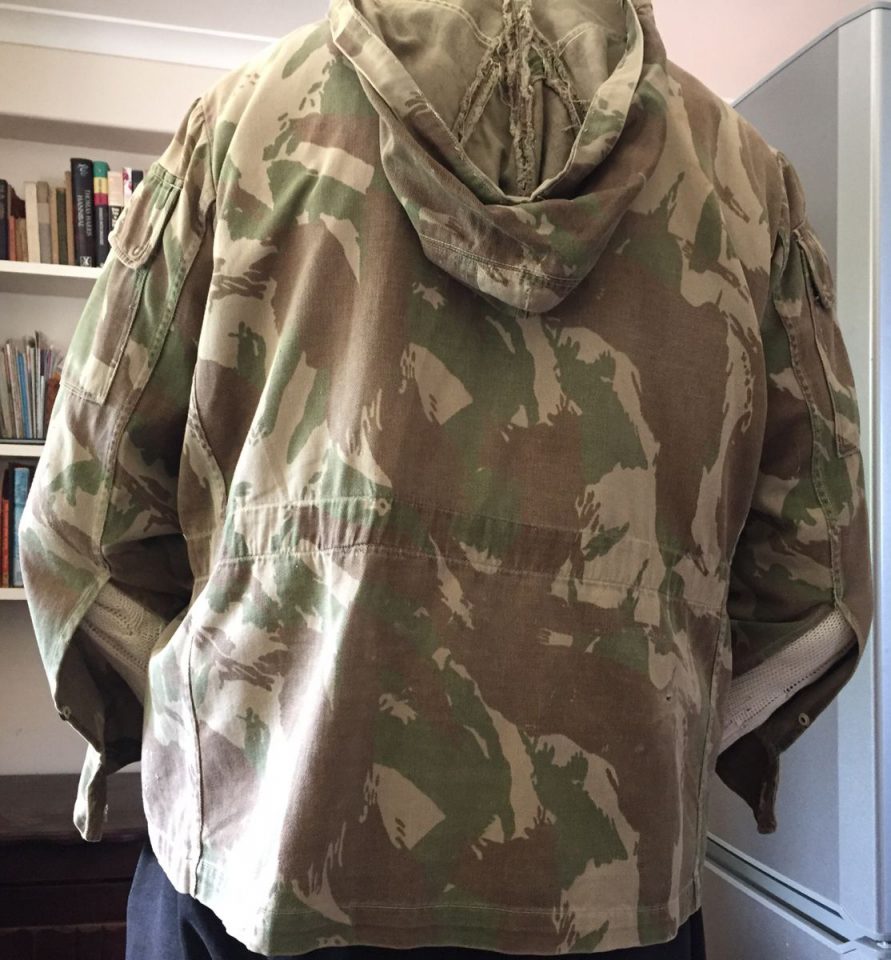

A similar modified jacket with snaps on the pockets was also posted here at one point: https://www.facebook.com/photo/?fbid=1093532011453460&set=pcb.4395005970606963. At least one standard Rhodesian camouflage jacket with similar modifications from the BSAP has been found [15]. Moving pockets to the arms for easier access when prone or if the wearer is injured is often done on US military BDU’s.
South Africa’s Hunter Group (1968 – 1974[4]/1976[5]) might have used the brown version of the pattern in very limited numbers [2][3].
Other Discussion:
The very existence of this pattern has been controversial among collectors since there are few surviving items and even fewer photographs and firsthand accounts due to its limited issue.
There is a description of two variations of the pattern from a BSAP Patrol Officer veteran who served around Makuti (northern Rhodesia near Lake Kariba and the Zambian border) between 1967 and January 1970 on Page 73 of The Black Boots: The History of the B.S.A. Police Support Unit. The Patrol Officer also describes being “issued with the new universal camouflage uniforms” because “the RLI [Rhodesian Light Infantry] said we looked like terrorists [insurgents]” in 1968 (Page 81). His autobiographical account also includes several usage photos between pages 73 – 75, particularly constables in the back of a truck.[16]

Further discussion about the BSAP vertical lizard camouflage pattern can be found here: http://www.newrhodesian.ca/viewtopic.php?f=45&t=692 (site unavailable as of July 17, 2024).
An un-altered, unissued example with snap fasteners can be seen here: https://forum.camouflagesociety.org/viewtopic.php?f=120&t=1701 (site may be down intermittently). The discussion theorizes that it could be a prototype for the Transkei Defense Force, which there is a link to because of the extreme similarities in pattern shape and clothing cut between Transkei and Zimbabwean Vertical Lizard (the BSAP pattern’s direct derivative) items.
